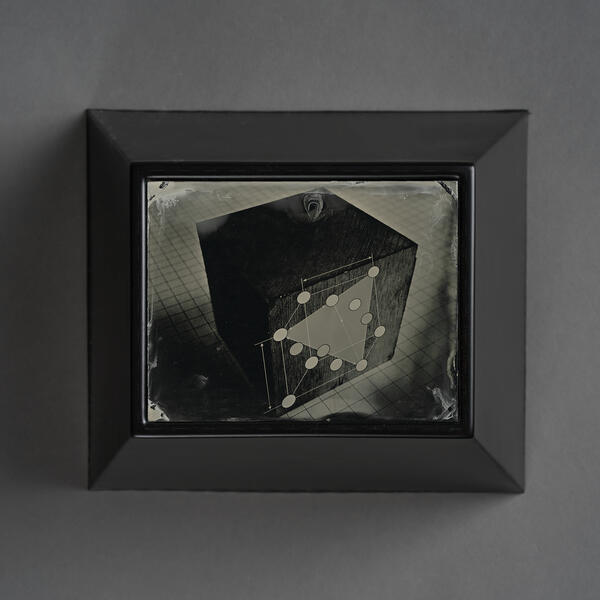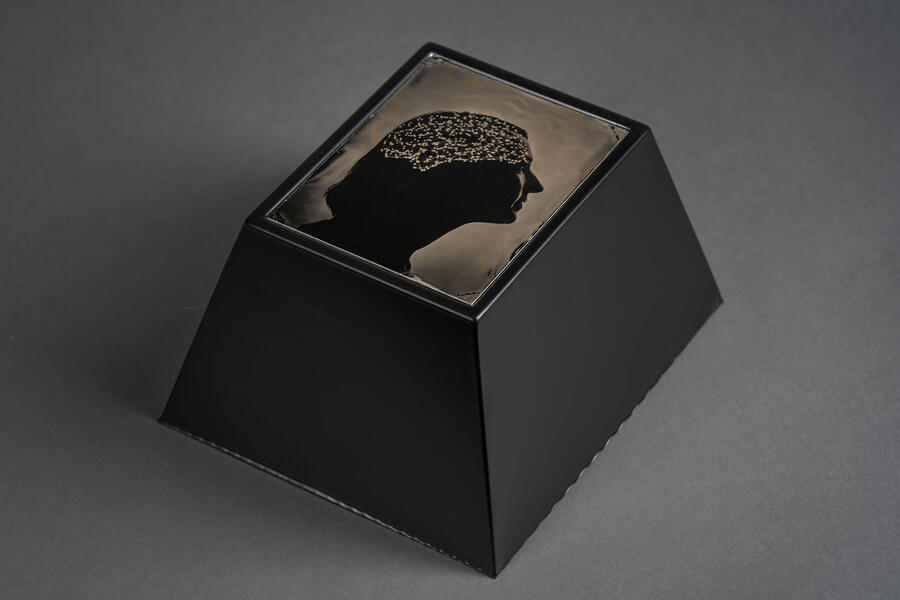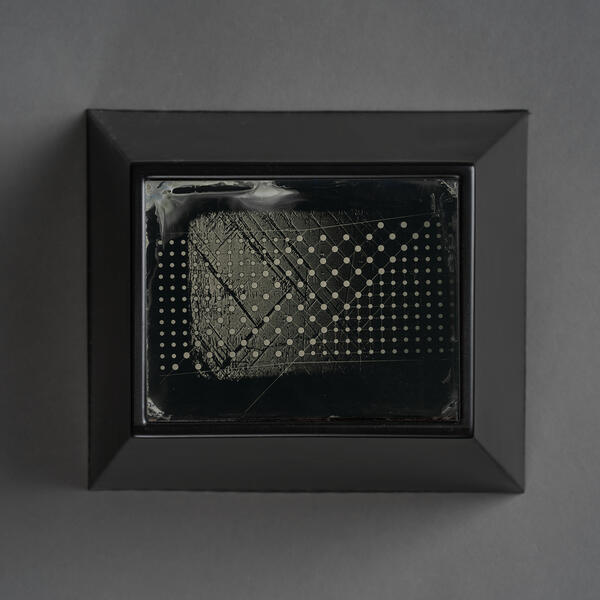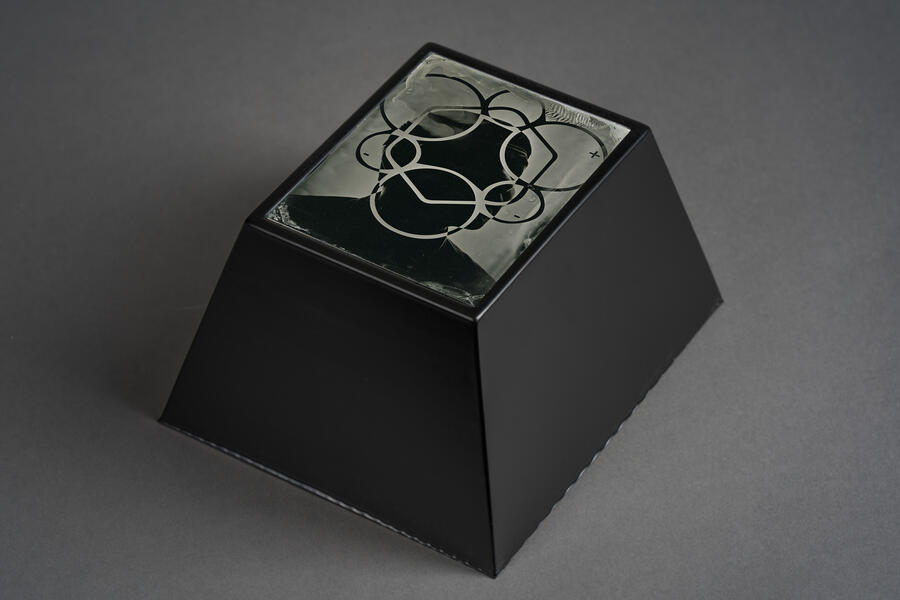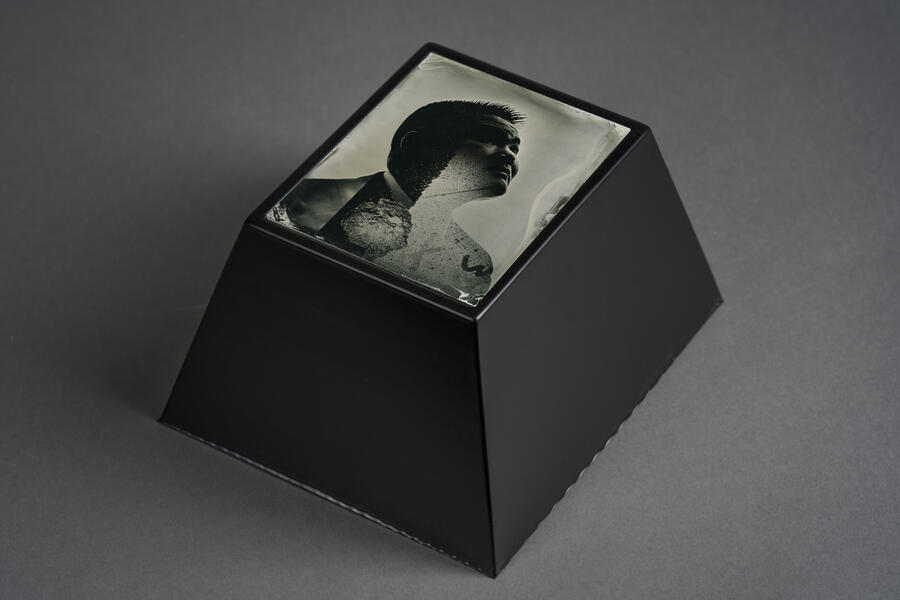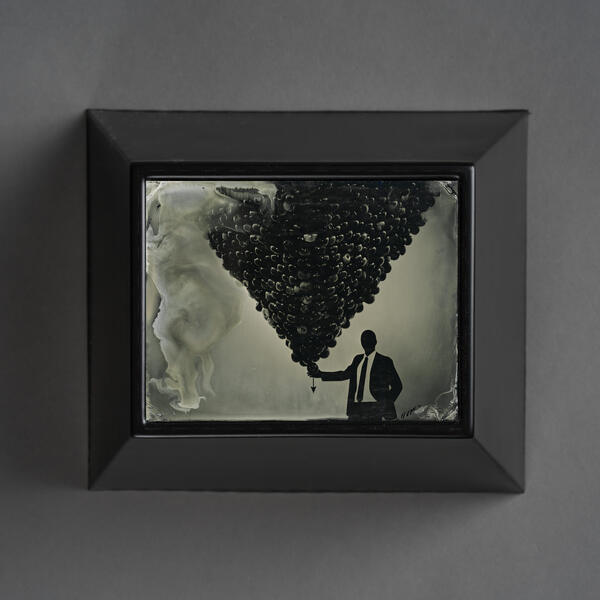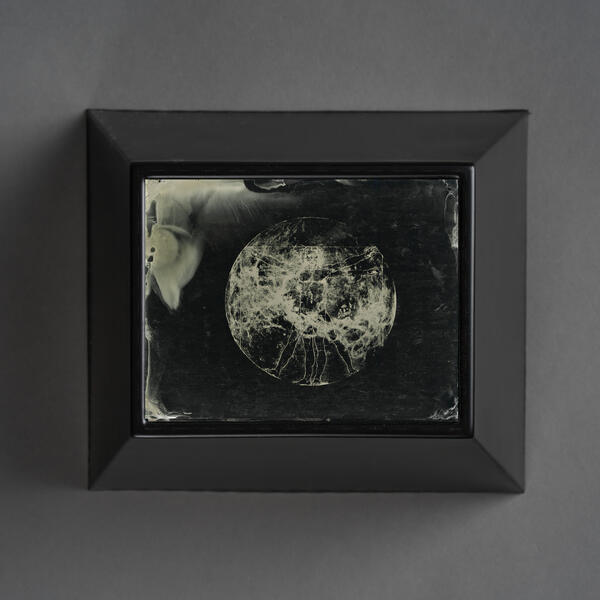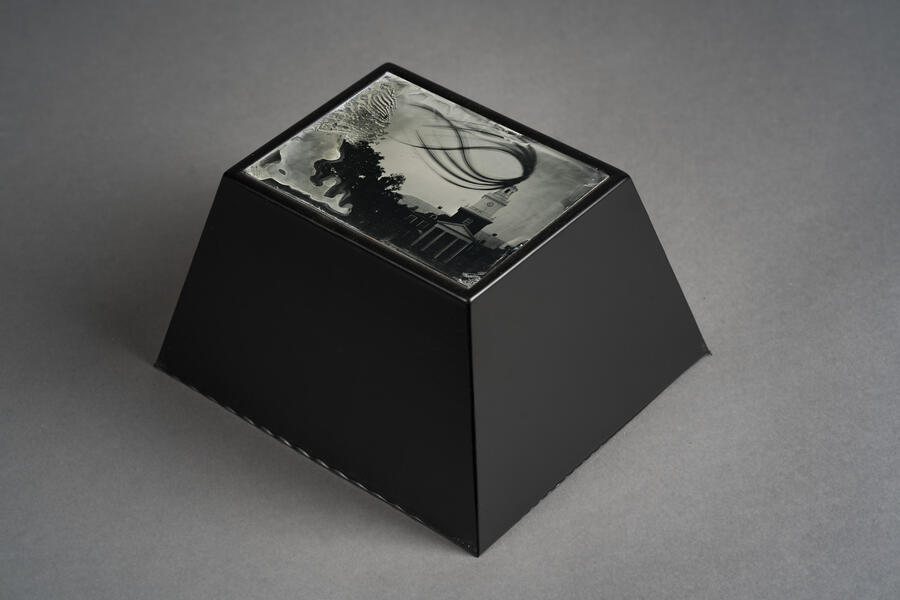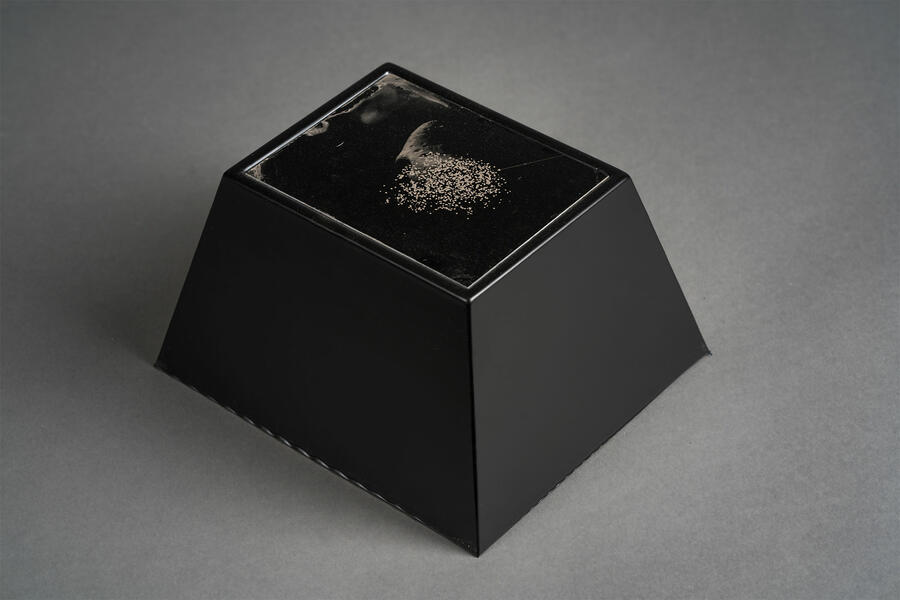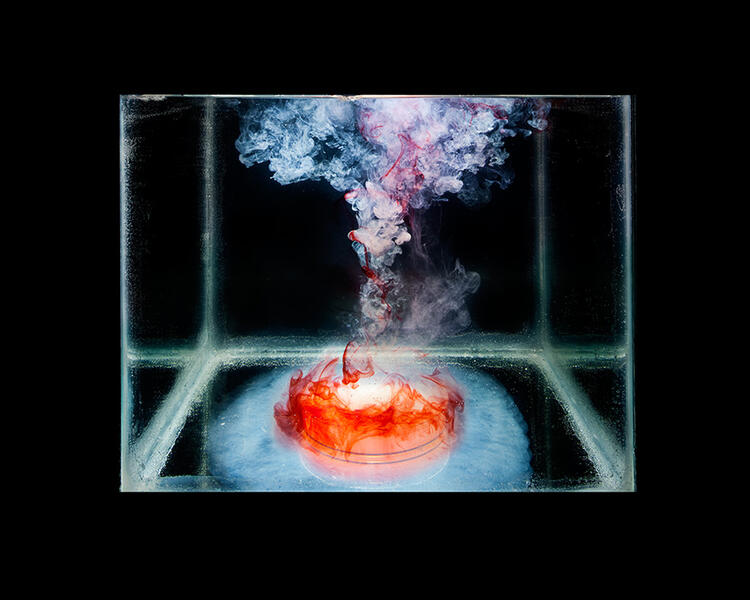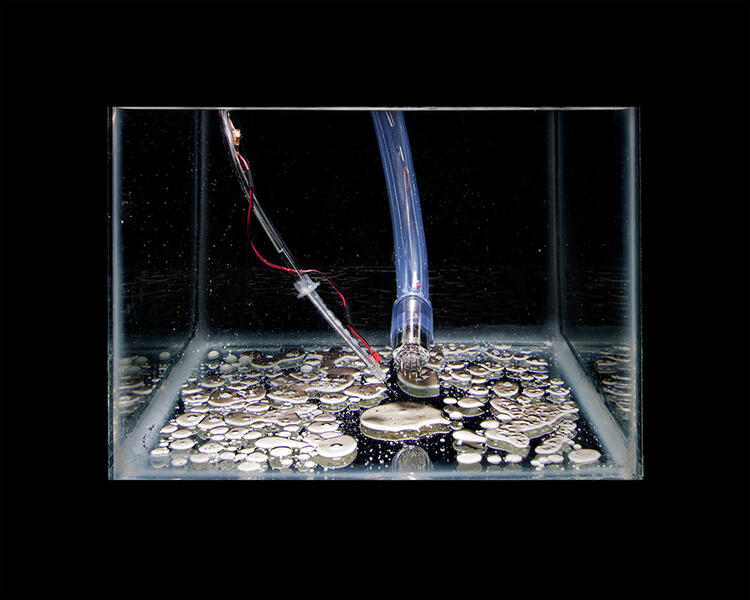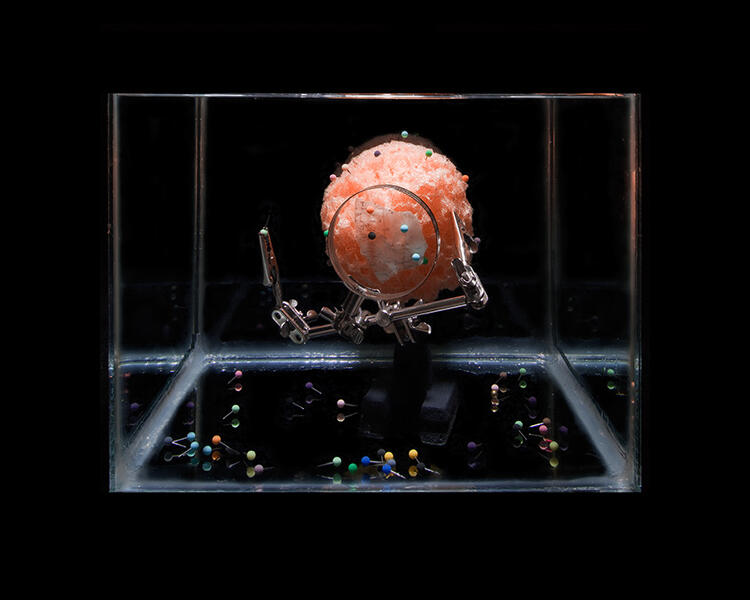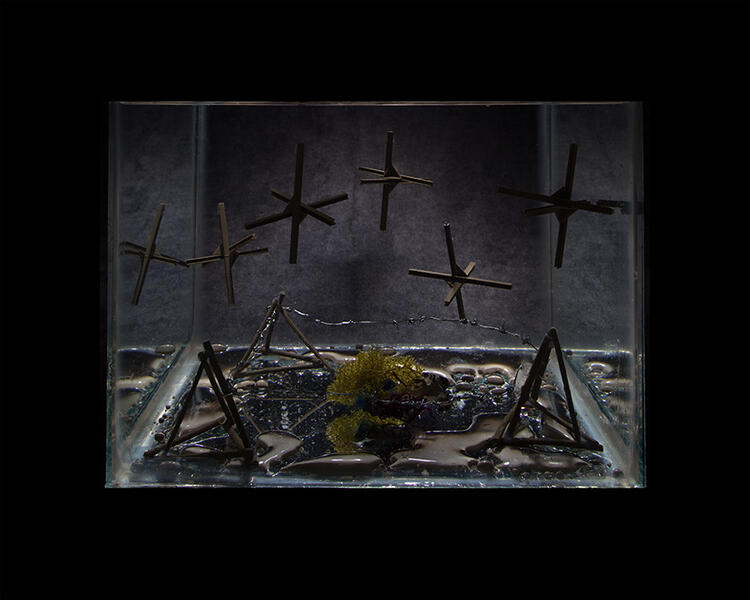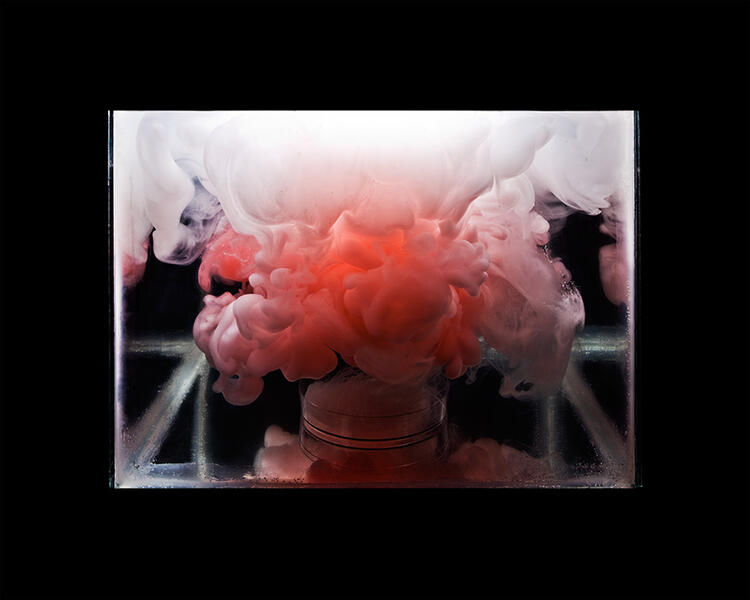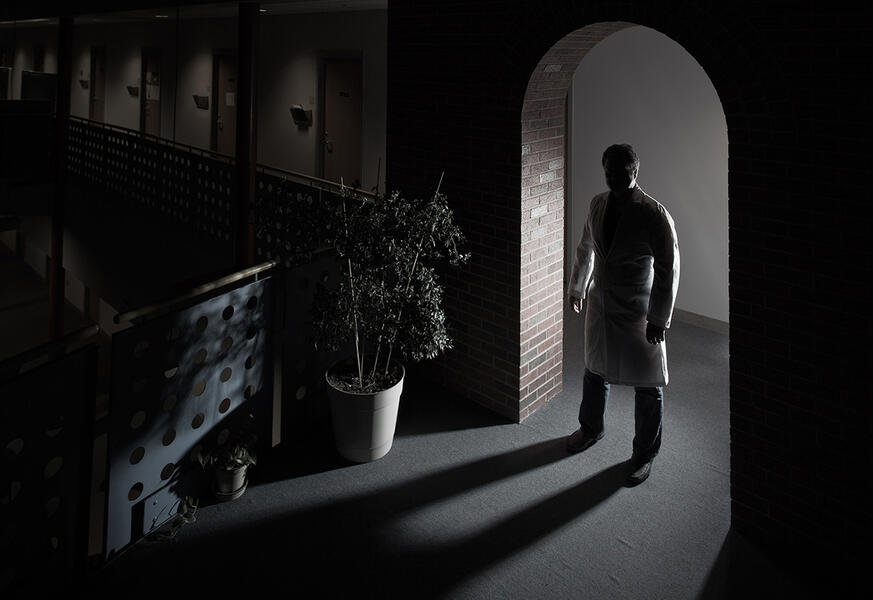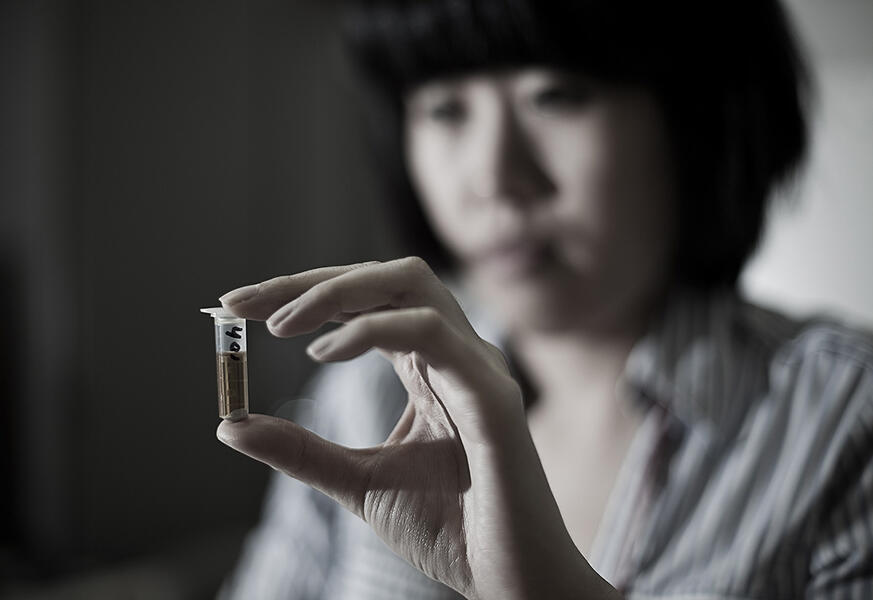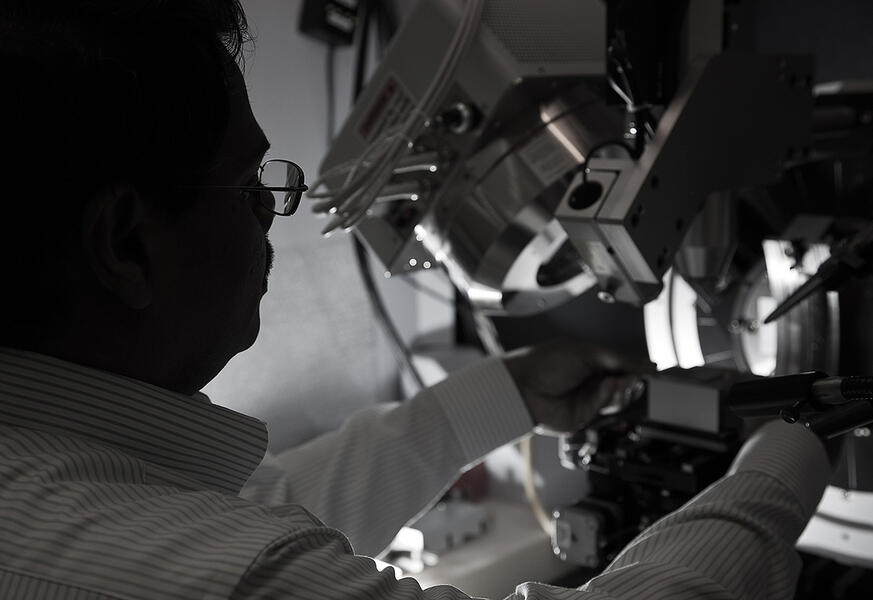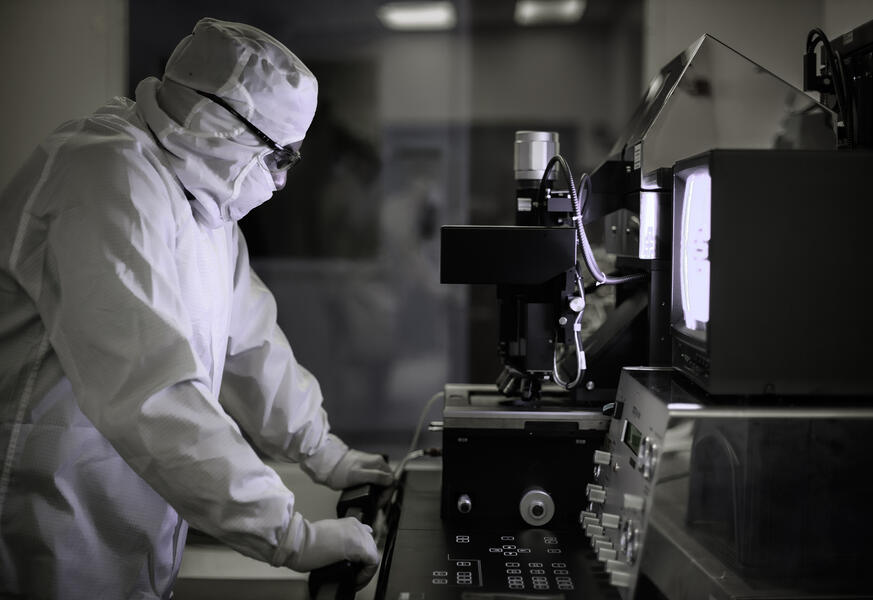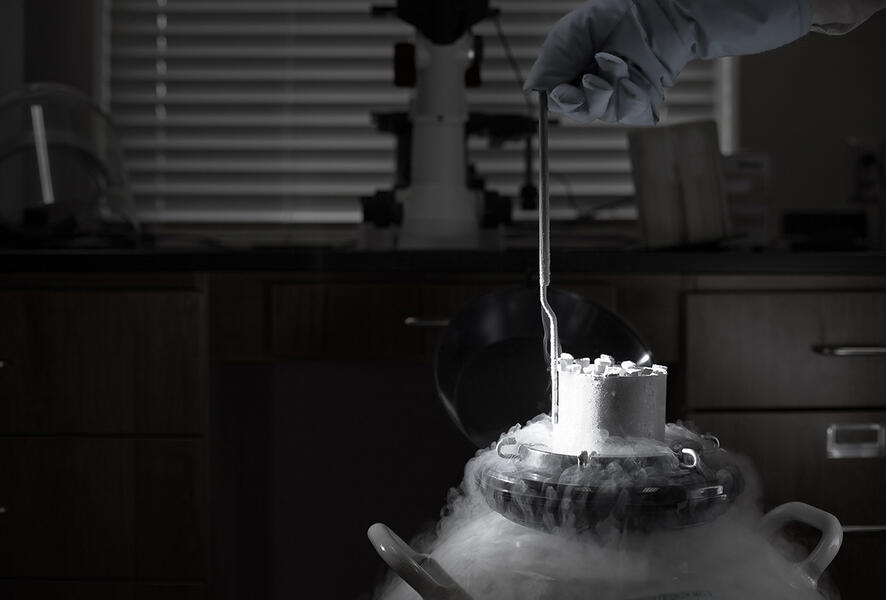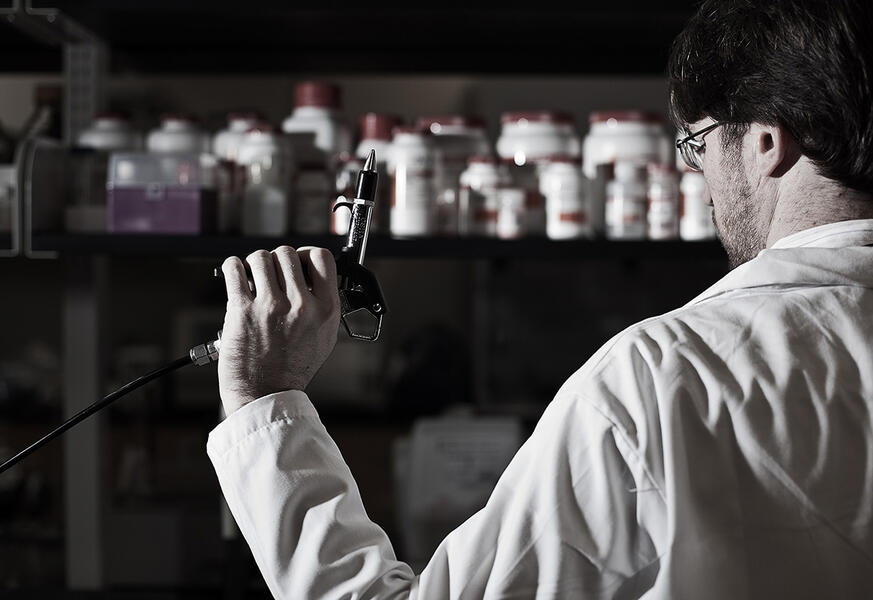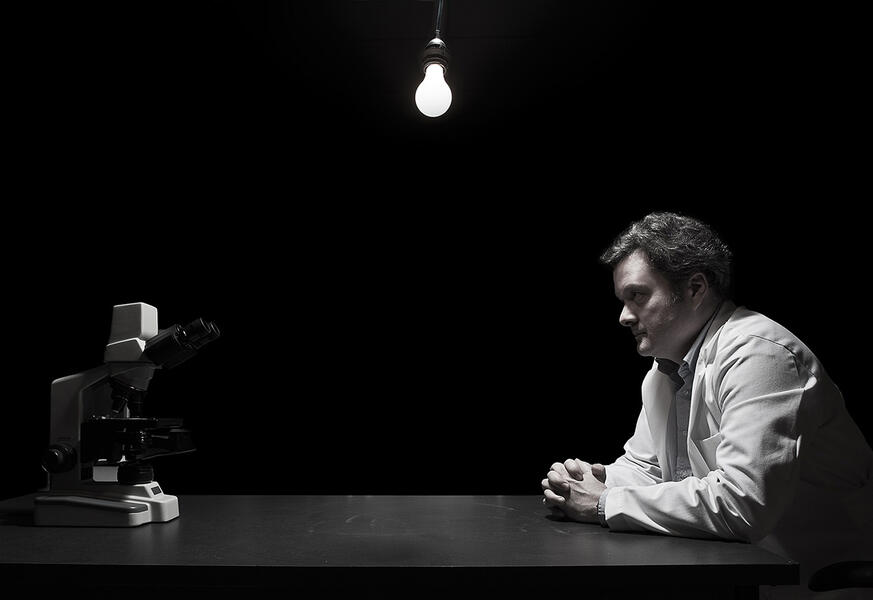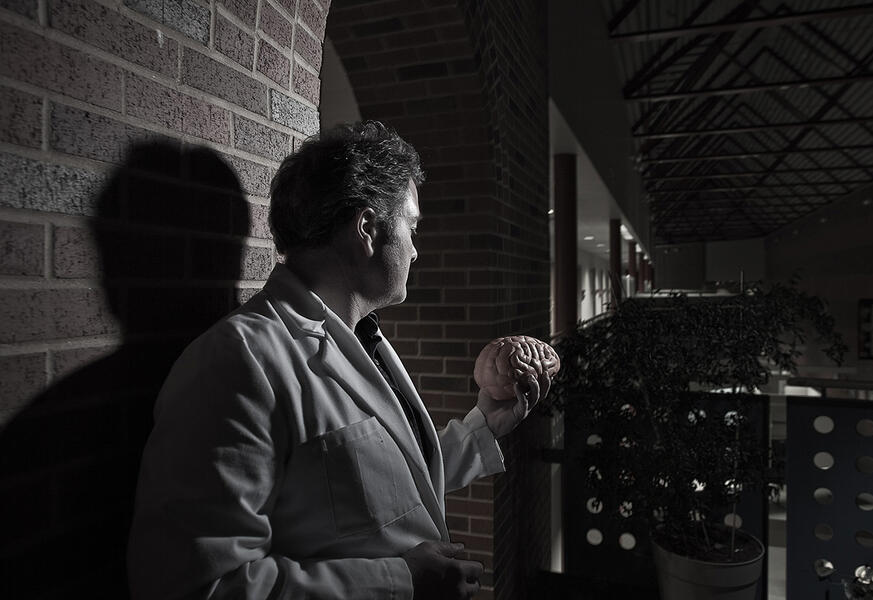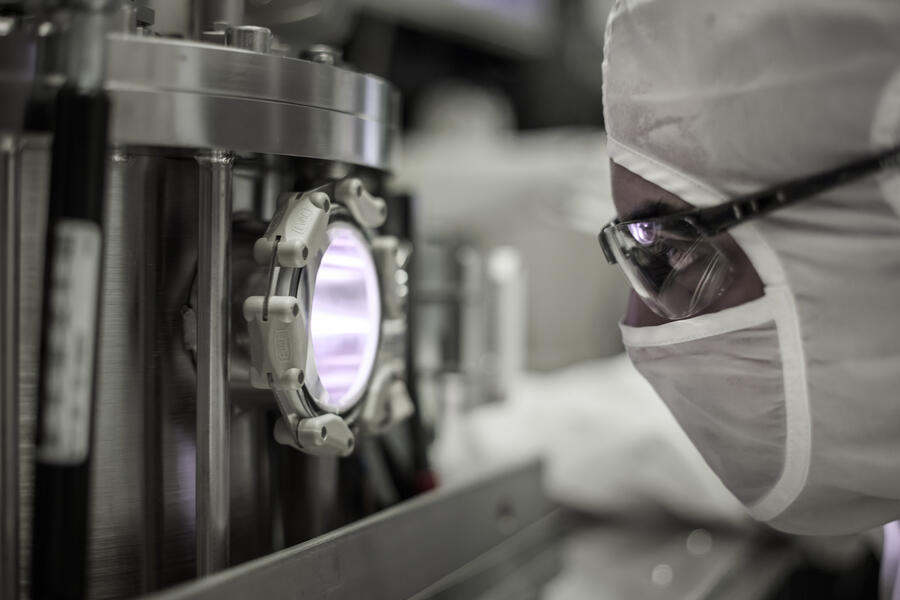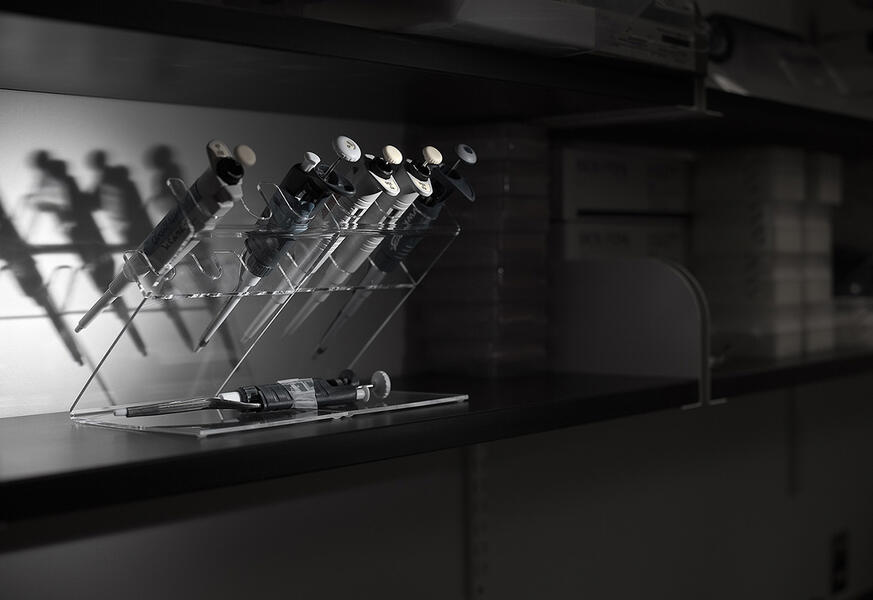About Jay

Jay Gould is an artist and a member of the faculty at the Maryland Institute College of Art (MICA). Originally from Minneapolis, Minnesota, Gould received his B.F.A. in photography from the University of Wisconsin and his M.F.A. from the Savannah College of Art & Design. His work, which integrates scientific topics into installation and constructed photographic projects, has won numerous national awards, such as the Berenice Abbott Prize for an emerging photographer, the Jeannie Pierce… more
Jump to a project:
Uncertain Passages - Photographs
"Don't get too near that leak. You wouldn't want to wind up in the other universe, would you?"
Kurt Vonnegut’s repeating character Kilgore Trout took to calling mirrors “leaks,” as he believed they were a connection to another universe. While to many this might seem like typical Vonnegut absurdity, to me it has always been a reminder of the way our imaginations can run wild when presented with curiosities, and the possibility of parallel universes is one of the most provocative curiosities of all. Nearly everything that defies explanation has considered alternative universes, including déjà vu, religion, and even physics. While I have been thinking of the possibility of other worlds since I was a child, the current prominence of the “multiverse” in modern physics is what has lead me to my current fixation with the topic and serves as the backbone of this recent body of images and physical constructions.
The Uncertain Passages series explores and meditates on the unobservable reality that theoretically underpins our existence. The photographs seek to balance the exhaustion of attempting to photograph an idea that may prove not to exist with the poetic license that comes from working with currently unknowable paradoxes. I have wandered the world building and finding symbolic doorways that pass through time, space, matter and other curious phenomena so that I might embrace the unknown and welcome viewers to engage with the complex sense of wonder that defines our species. When answers are evasive, as they often are in modern science, we hold to this wonder and accept the words of Albert Einstein, “Imagination is more important than knowledge.”
Kurt Vonnegut’s repeating character Kilgore Trout took to calling mirrors “leaks,” as he believed they were a connection to another universe. While to many this might seem like typical Vonnegut absurdity, to me it has always been a reminder of the way our imaginations can run wild when presented with curiosities, and the possibility of parallel universes is one of the most provocative curiosities of all. Nearly everything that defies explanation has considered alternative universes, including déjà vu, religion, and even physics. While I have been thinking of the possibility of other worlds since I was a child, the current prominence of the “multiverse” in modern physics is what has lead me to my current fixation with the topic and serves as the backbone of this recent body of images and physical constructions.
The Uncertain Passages series explores and meditates on the unobservable reality that theoretically underpins our existence. The photographs seek to balance the exhaustion of attempting to photograph an idea that may prove not to exist with the poetic license that comes from working with currently unknowable paradoxes. I have wandered the world building and finding symbolic doorways that pass through time, space, matter and other curious phenomena so that I might embrace the unknown and welcome viewers to engage with the complex sense of wonder that defines our species. When answers are evasive, as they often are in modern science, we hold to this wonder and accept the words of Albert Einstein, “Imagination is more important than knowledge.”
-
 Mirrors Are Leaks30 x 44" Archival Inkjet Print
Mirrors Are Leaks30 x 44" Archival Inkjet Print -
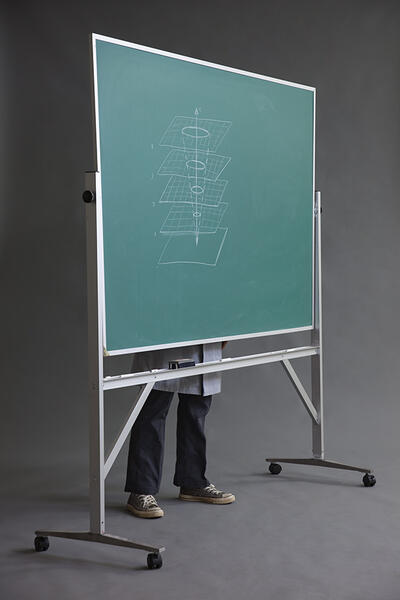 Null Geodesics34x24" Archival Inkjet Print
Null Geodesics34x24" Archival Inkjet Print -
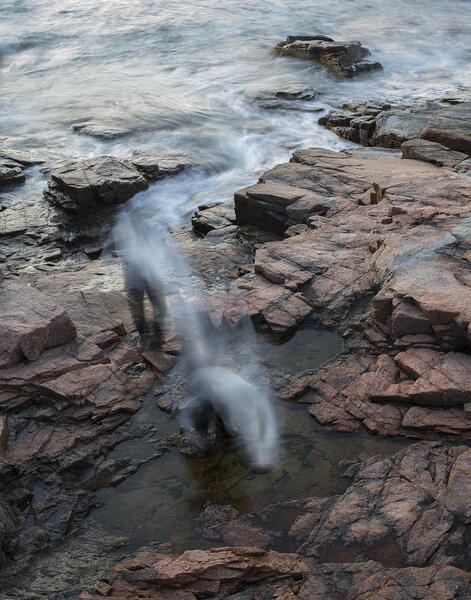 Tidal Passage44 x 36" Archival Inkjet Print
Tidal Passage44 x 36" Archival Inkjet Print -
 Passage24x72" Archival Inkjet Print
Passage24x72" Archival Inkjet Print -
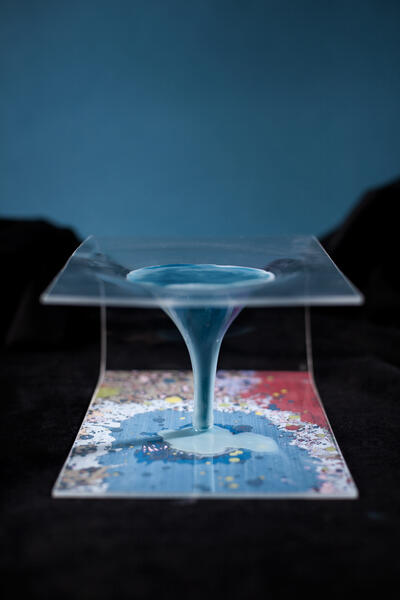 Singularity34 x 24" Archival Inkjet Print
Singularity34 x 24" Archival Inkjet Print -
 Symmetry34 x 24" Archival Inkjet Print
Symmetry34 x 24" Archival Inkjet Print -
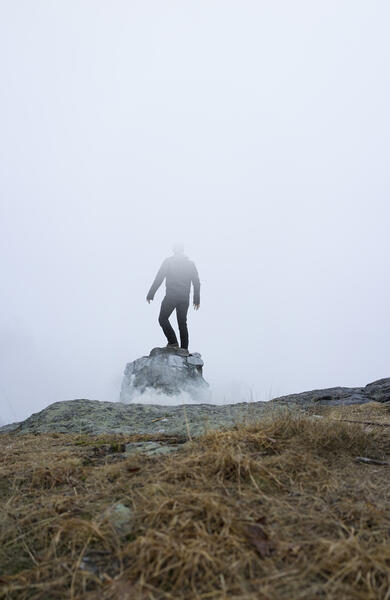 Fade44 x 30" Archival Inkjet Print
Fade44 x 30" Archival Inkjet Print -
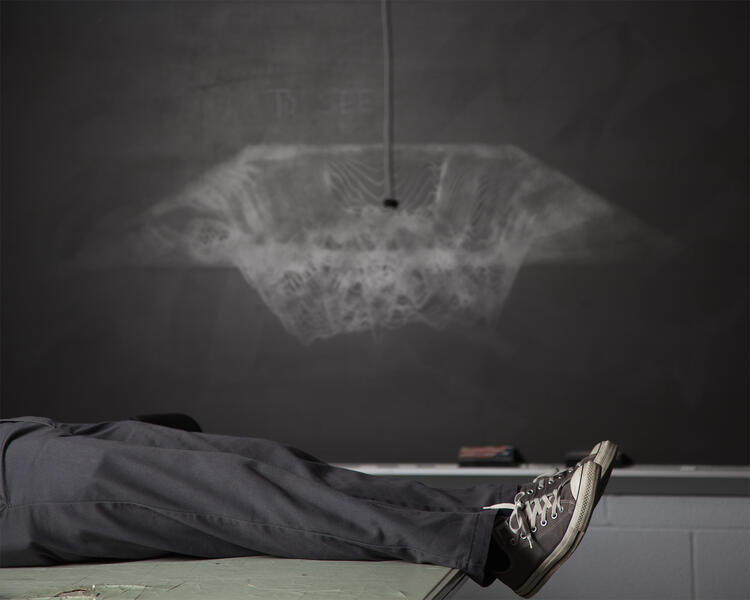 Scheme24 x 30" Archival Inkjet Print
Scheme24 x 30" Archival Inkjet Print -
 Slippage24 x 30" Archival Inkjet Print
Slippage24 x 30" Archival Inkjet Print -
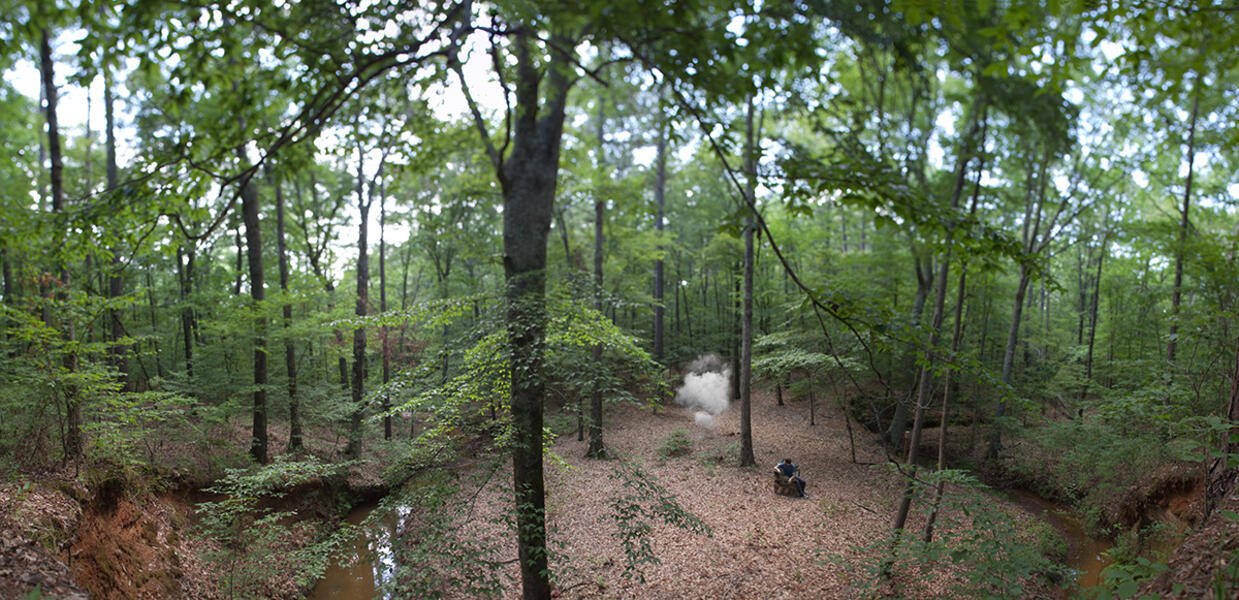 A Compelling Sense of Familiarity24x44" Archival Inkjet Print
A Compelling Sense of Familiarity24x44" Archival Inkjet Print
Uncertain Passages - Constructed Photographic Objects
"Don't get too near that leak. You wouldn't want to wind up in the other universe, would you?"
Kurt Vonnegut’s repeating character Kilgore Trout took to calling mirrors “leaks,” as he believed they were a connection to another universe. While to many this might seem like typical Vonnegut absurdity, to me it has always been a reminder of the way our imaginations can run wild when presented with curiosities, and the possibility of parallel universes is one of the most provocative curiosities of all. Nearly everything that defies explanation has considered alternative universes, including déjà vu, religion, and even physics. While I have been thinking of the possibility of other worlds since I was a child, the current prominence of the “multiverse” in modern physics is what has lead me to my current fixation with the topic and serves as the backbone of this recent body of images and physical constructions.
The Uncertain Passages series explores and meditates on the unobservable reality that theoretically underpins our existence. The photographs seek to balance the exhaustion of attempting to photograph an idea that may prove not to exist with the poetic license that comes from working with currently unknowable paradoxes. I have wandered the world building and finding symbolic doorways that pass through time, space, matter and other curious phenomena so that I might embrace the unknown and welcome viewers to engage with the complex sense of wonder that defines our species. When answers are evasive, as they often are in modern science, we hold to this wonder and accept the words of Albert Einstein, “Imagination is more important than knowledge.”
Kurt Vonnegut’s repeating character Kilgore Trout took to calling mirrors “leaks,” as he believed they were a connection to another universe. While to many this might seem like typical Vonnegut absurdity, to me it has always been a reminder of the way our imaginations can run wild when presented with curiosities, and the possibility of parallel universes is one of the most provocative curiosities of all. Nearly everything that defies explanation has considered alternative universes, including déjà vu, religion, and even physics. While I have been thinking of the possibility of other worlds since I was a child, the current prominence of the “multiverse” in modern physics is what has lead me to my current fixation with the topic and serves as the backbone of this recent body of images and physical constructions.
The Uncertain Passages series explores and meditates on the unobservable reality that theoretically underpins our existence. The photographs seek to balance the exhaustion of attempting to photograph an idea that may prove not to exist with the poetic license that comes from working with currently unknowable paradoxes. I have wandered the world building and finding symbolic doorways that pass through time, space, matter and other curious phenomena so that I might embrace the unknown and welcome viewers to engage with the complex sense of wonder that defines our species. When answers are evasive, as they often are in modern science, we hold to this wonder and accept the words of Albert Einstein, “Imagination is more important than knowledge.”
-
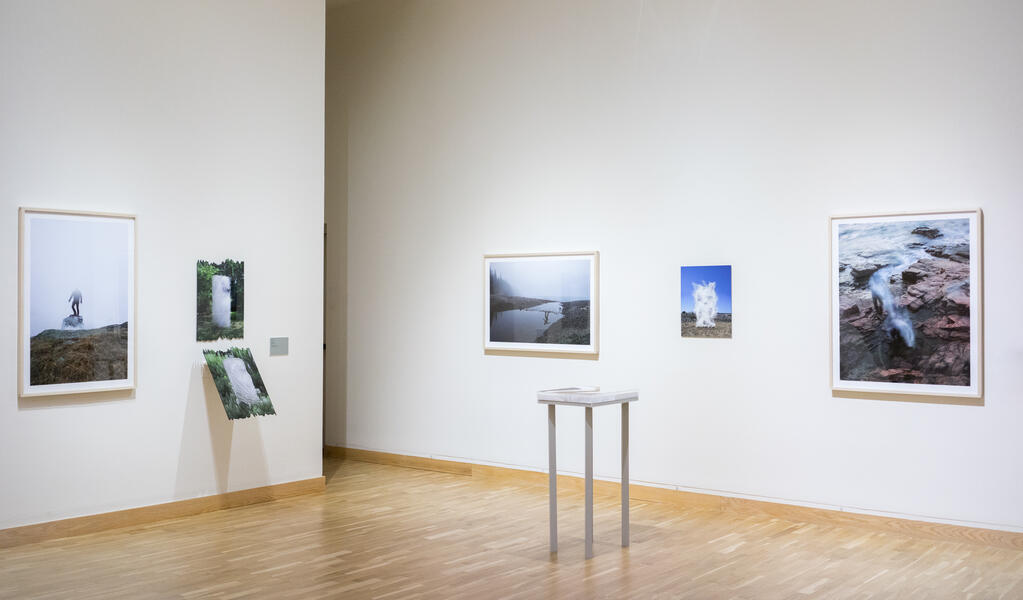 Installation ViewBates College Museum of Art, June-October, 2015
Installation ViewBates College Museum of Art, June-October, 2015 -
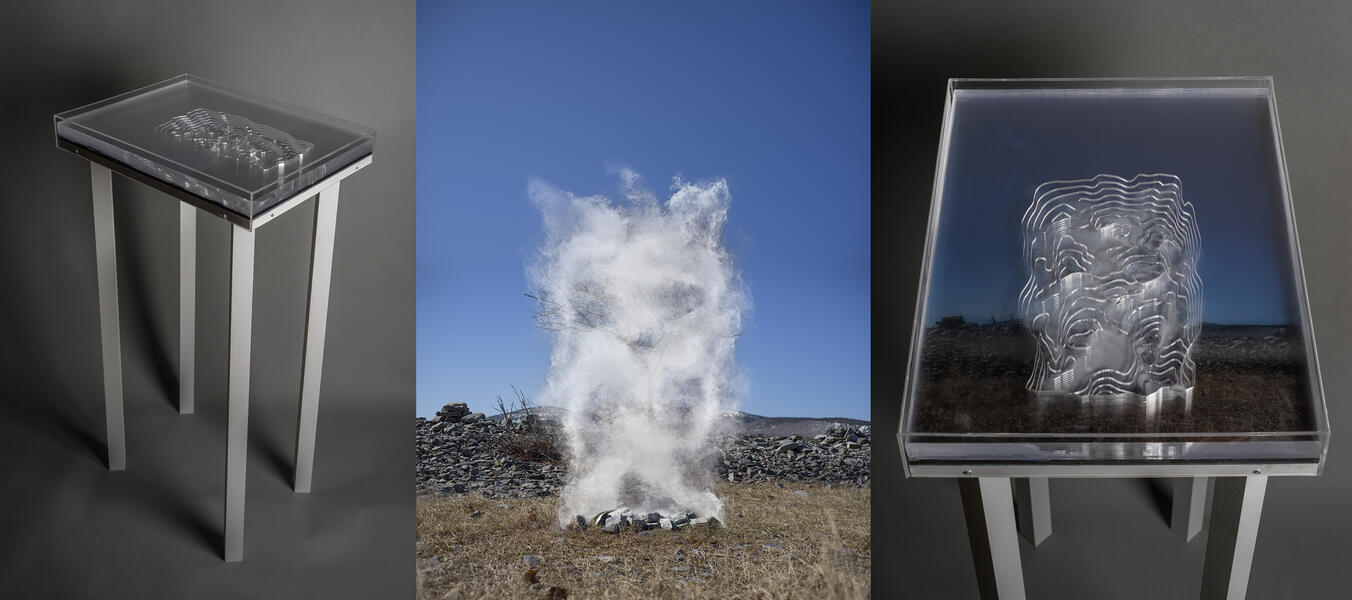 Portal Topography #216x20x34" (photo sculpture) and 20x16" (photo) Lasercut acrylic, facemounted pigment prints, wood.
Portal Topography #216x20x34" (photo sculpture) and 20x16" (photo) Lasercut acrylic, facemounted pigment prints, wood. -
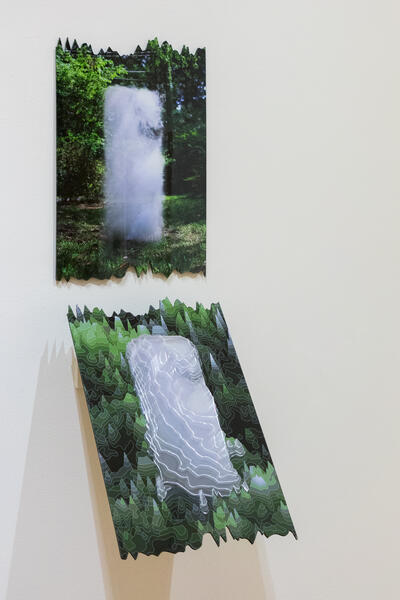 Portal Topography #1Lasercut acrylic, facemounted pigment print, sintra, wood.
Portal Topography #1Lasercut acrylic, facemounted pigment print, sintra, wood. -
 WormholePigment print face-mounted to molded acrylic sheet, attached to corner.
WormholePigment print face-mounted to molded acrylic sheet, attached to corner. -
 ParallelPigment prints mounted 2-sided to dibond, supported by walnut base.
ParallelPigment prints mounted 2-sided to dibond, supported by walnut base. -
 Half Red StonePigment print face-mounted to molded acrylic sheet and backed with handmade paper.
Half Red StonePigment print face-mounted to molded acrylic sheet and backed with handmade paper. -
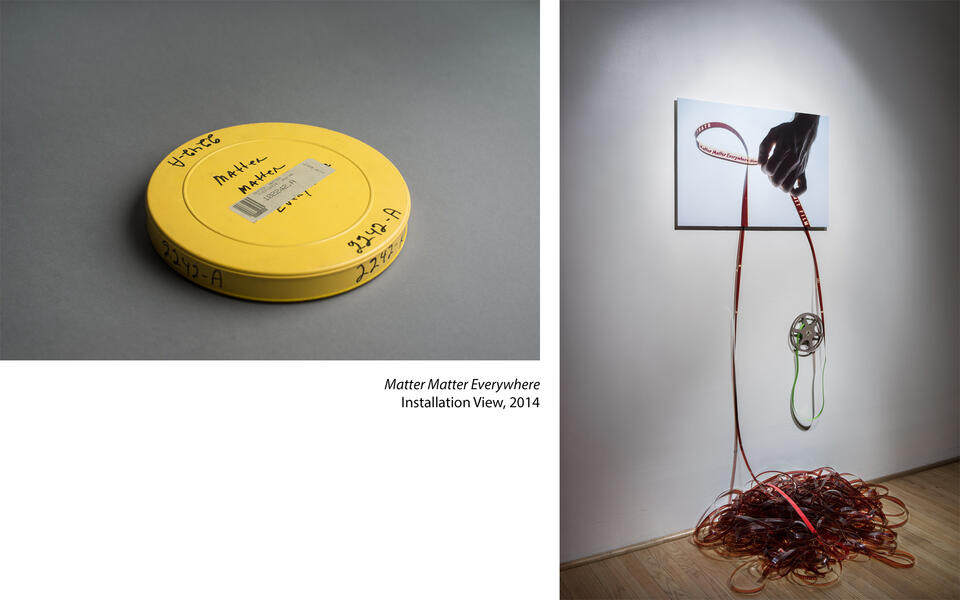 Matter Matter EverywherePigment print and archive educational film
Matter Matter EverywherePigment print and archive educational film -
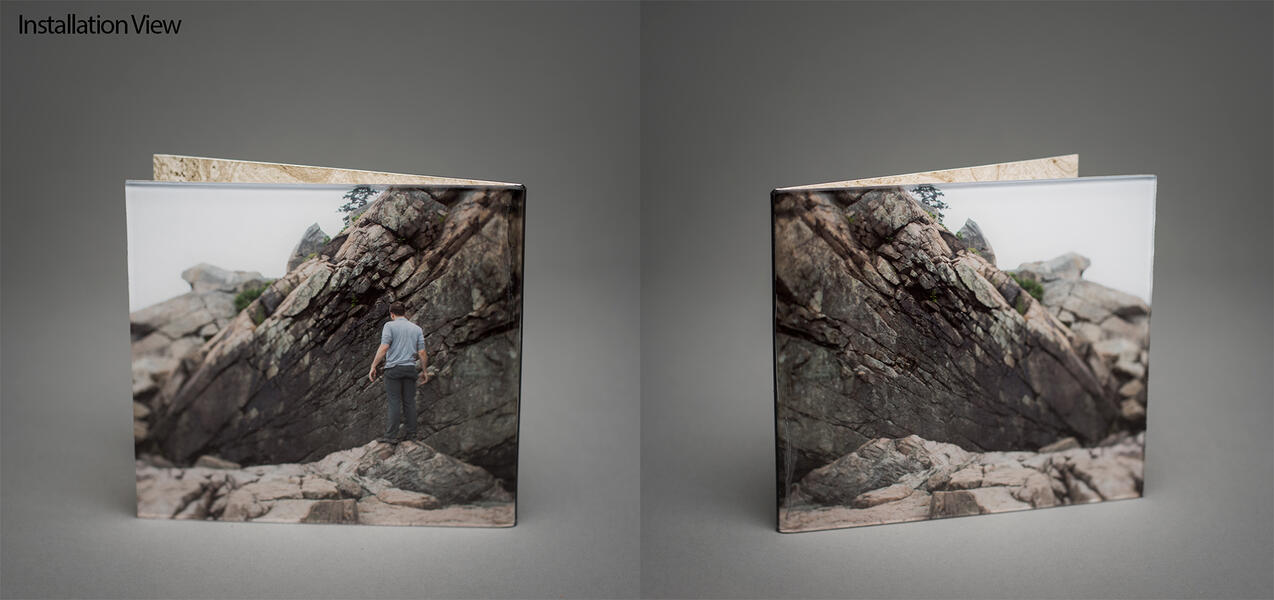 Quantum ChoicePigment print face-mounted to molded acrylic.
Quantum ChoicePigment print face-mounted to molded acrylic. -
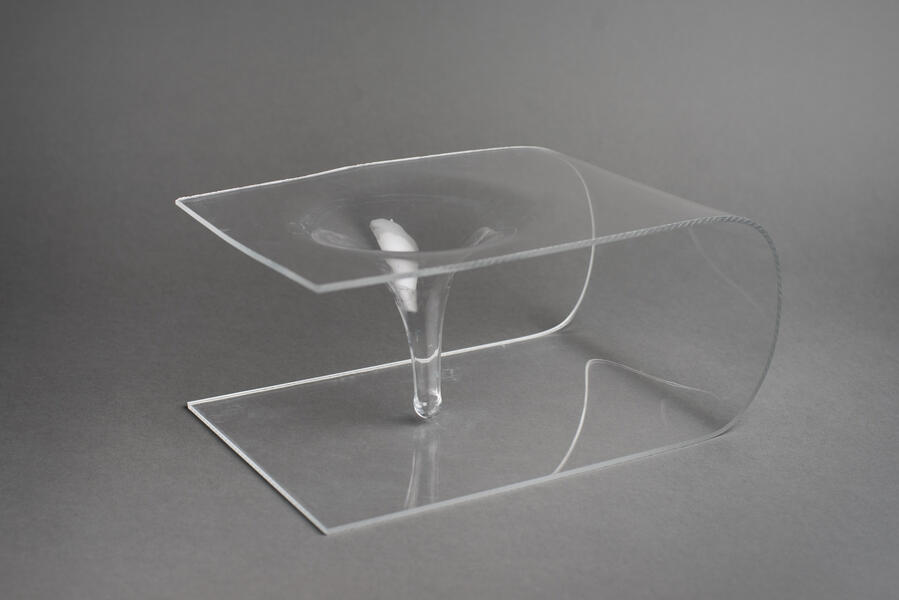 Wormhole Study #2Molded acrylic
Wormhole Study #2Molded acrylic -
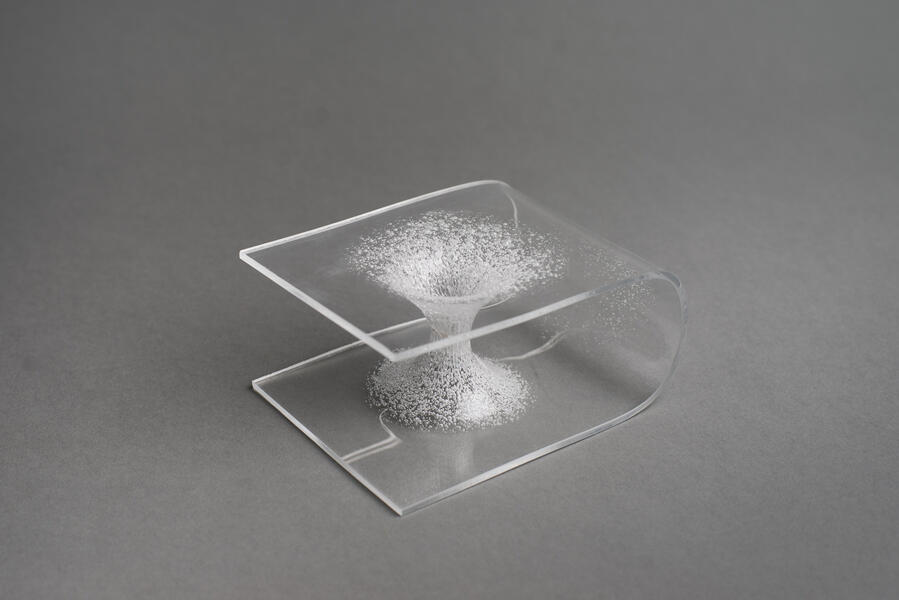 Wormhole Study #1Molded acrylic
Wormhole Study #1Molded acrylic
Escape Velocity
Drive a good hour outside of nearly every American metropolitan area on a sunny Saturday morning and you may see small chutes of smoke lingering in the sky. If you are like me, you have even curiously traced these trails from time to time. What I have seen and learned during these adventures with my camera through these groups as well as many of the American museums dedicated to exploring numerous frontiers has been an interesting mixture of what I expected to see, and also a lot of unexpected lessons about community, creative satisfaction and even my own fears.
The typical model rocketry group is a tight-knit population of explorers, many of whom are taking their first steps into hands-on science. These less experienced members are guided by an entire community, in which many members have dedicated their lives and even careers to aerospace, but still find a very necessary rush of excitement in continuing to creatively problem solve their own, personal projects, even if these projects are significantly less cutting-edge than what they might do at work. It’s in both these sets of people that I’ve seen myself and reflected on my own decisions and fears of the past. In the young explorers I see versions of myself and and my initial discovery of innovation and engineering that I found in the simple cardboard rockets. In the adults I see what might have been for me before I decided to leave my engineering studies and become an artist. These are reminders of the hesitation I felt when choosing between art and science. What I did not expect to find in this project was reassurance in my decision and reiteration that science can be art and vise-versa. I now see that no matter what path we choose, finding an outlet is essential. Humanity always has a need to explore its frontiers, whether its art or space, grand or small, we seek solace in exploring the unknown and learning what we can from it, piece by piece.
The typical model rocketry group is a tight-knit population of explorers, many of whom are taking their first steps into hands-on science. These less experienced members are guided by an entire community, in which many members have dedicated their lives and even careers to aerospace, but still find a very necessary rush of excitement in continuing to creatively problem solve their own, personal projects, even if these projects are significantly less cutting-edge than what they might do at work. It’s in both these sets of people that I’ve seen myself and reflected on my own decisions and fears of the past. In the young explorers I see versions of myself and and my initial discovery of innovation and engineering that I found in the simple cardboard rockets. In the adults I see what might have been for me before I decided to leave my engineering studies and become an artist. These are reminders of the hesitation I felt when choosing between art and science. What I did not expect to find in this project was reassurance in my decision and reiteration that science can be art and vise-versa. I now see that no matter what path we choose, finding an outlet is essential. Humanity always has a need to explore its frontiers, whether its art or space, grand or small, we seek solace in exploring the unknown and learning what we can from it, piece by piece.
-
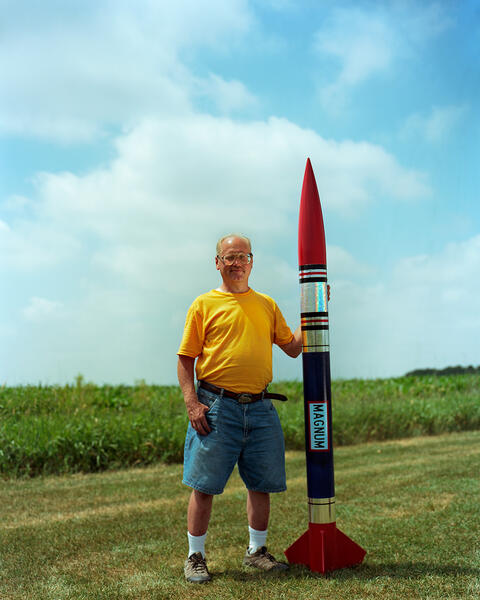 Dave30x40" Archival Inkjet Print
Dave30x40" Archival Inkjet Print -
 Rocket Wall, Ruston, Louisiana30x40" Archival Inkjet Print
Rocket Wall, Ruston, Louisiana30x40" Archival Inkjet Print -
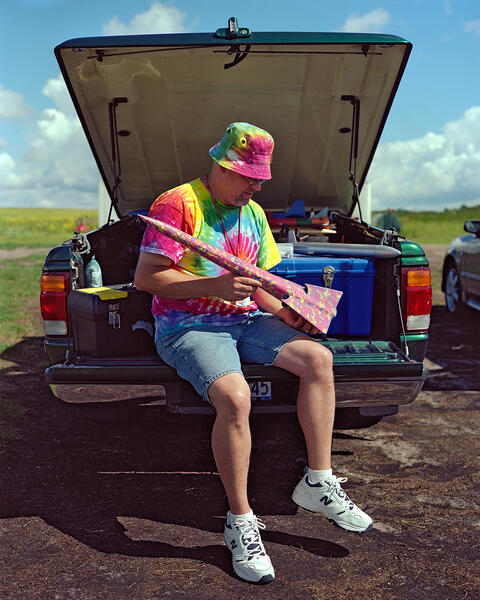 Neil30x40" Archival Inkjet Print
Neil30x40" Archival Inkjet Print -
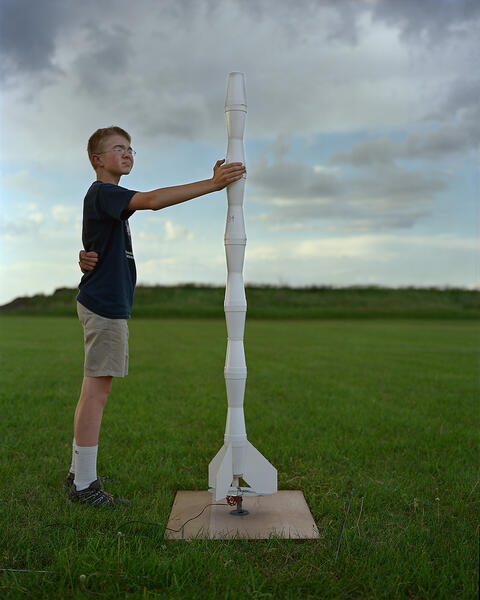 Styrofoam Cup Rocket30x40" Archival Inkjet Print
Styrofoam Cup Rocket30x40" Archival Inkjet Print -
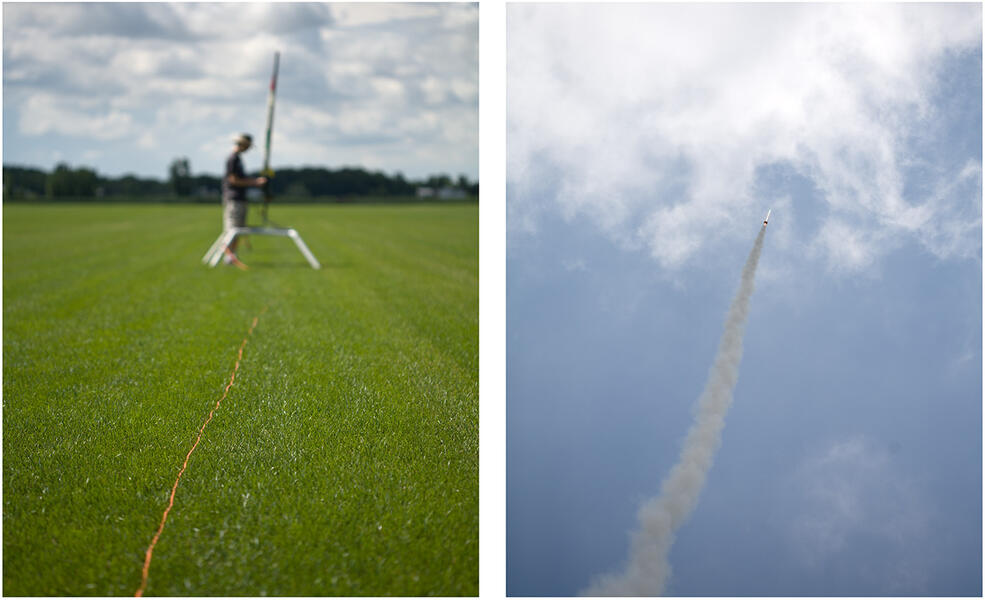 Caleb - Launch30x60" Archival Inkjet Print
Caleb - Launch30x60" Archival Inkjet Print -
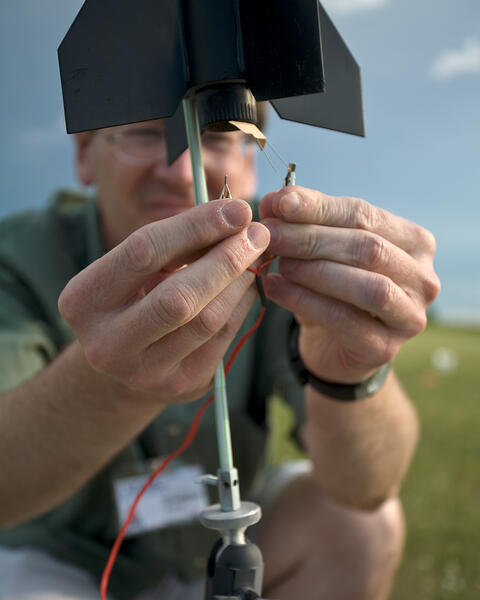 Duane30x40" Archival Inkjet Print
Duane30x40" Archival Inkjet Print -
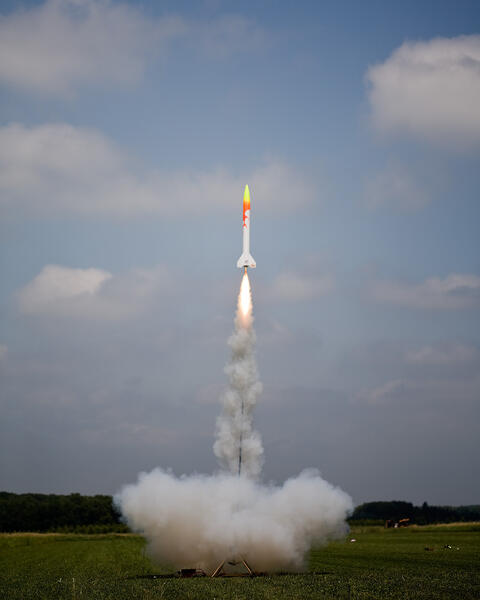 First Class One Launch30x40" Archival Inkjet Print
First Class One Launch30x40" Archival Inkjet Print -
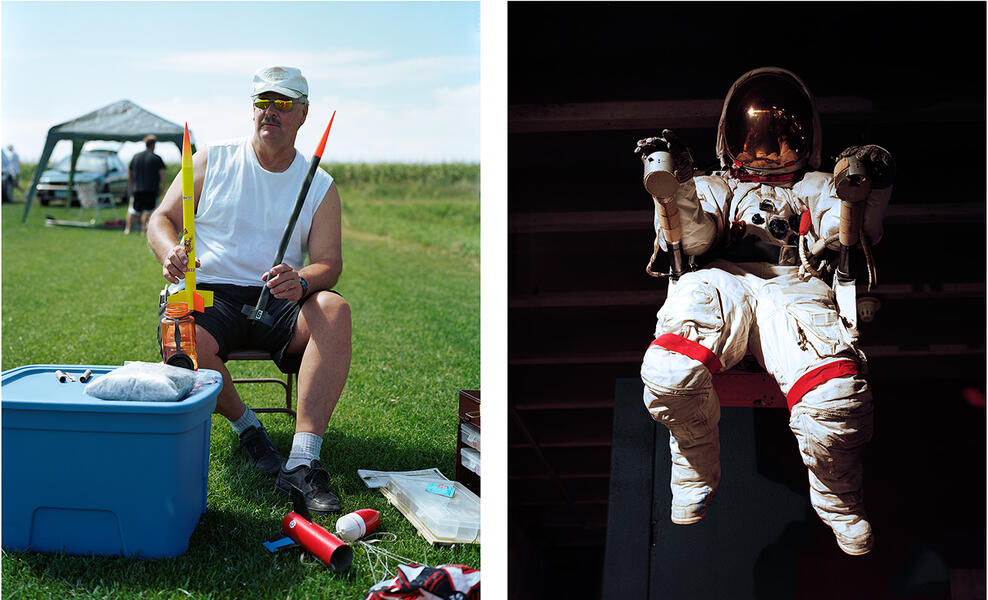 Michael - Spacewalk40x60" Archival Inkjet Print
Michael - Spacewalk40x60" Archival Inkjet Print -
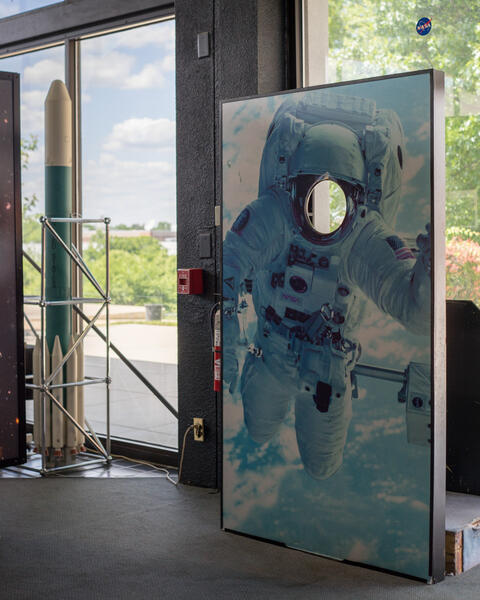 Dreams
Dreams -
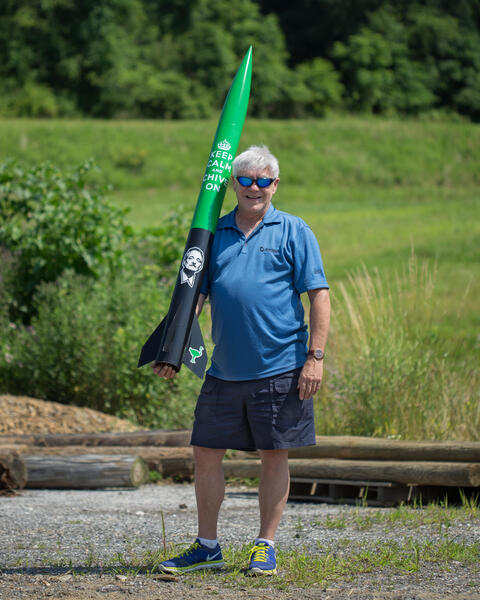 Kevin
Kevin
Extreme Materials - Under Strain
I was selected as the first Artist in Residence for the Extreme Arts Program at the Extreme Materials Instititute at Johns Hopkins University ( HEMI ). The goal of this artist/designer in residence position is to bring in artists in order to collaborate and explore ways to represent, visualize, and/or interpret HEMI research. Using a wide range of media and processes, this work reimagines HEMI's research using playful analogies, unique narratives and unexpected lab documentation, inviting audiences to admire the depth and fascination that extreme materials represent.
In this set of images, I created Wet Plate Collodion Photographic Sculptures responding to a range of research done at the Hopkins Extreme Materials Institute. These images are based on drawings made in my sketchbooks during meetings throughout the residency, often pulling from charts and analogies made by the researchers and students. Wet Plate Collodion is one of the oldest photographic processes. These remind me of a time when all photographers were scientists to a degree. While the medium has been democratized, our shared sense of curiosity and desire to invent keeps us connected. These images reclaim the process, adding an inventive spin through experimental image production process and a sculptural presentation.
In this set of images, I created Wet Plate Collodion Photographic Sculptures responding to a range of research done at the Hopkins Extreme Materials Institute. These images are based on drawings made in my sketchbooks during meetings throughout the residency, often pulling from charts and analogies made by the researchers and students. Wet Plate Collodion is one of the oldest photographic processes. These remind me of a time when all photographers were scientists to a degree. While the medium has been democratized, our shared sense of curiosity and desire to invent keeps us connected. These images reclaim the process, adding an inventive spin through experimental image production process and a sculptural presentation.
Nearby Wanderers
A installation tribute to the beauty and importance of the eight planets in our solar system. The word ‘Planet’ comes from the ancient greek meaning “Wandering Star.” In one of my favorite books, Pale Blue Dot, Carl Sagan poetically relates humanity’s need to question, observe and wonder with these celestial wanderers. This mode of thinking has always inspired me to continue to apply stories to the fascinating world around us. Much as the greeks did when they named the planets after gods, which is why I chose to title each of these artworks after their related greek deity.
Pigment transfer to Glass, mounted in handmade, maple, shadowbox frames.
11? x 11? each
Pigment transfer to Glass, mounted in handmade, maple, shadowbox frames.
11? x 11? each
-
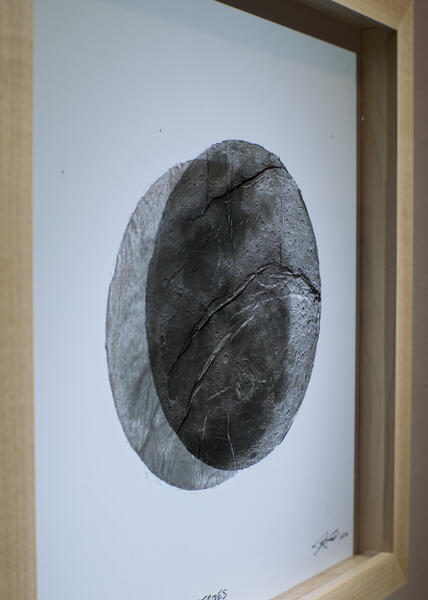 Hermes10x10" Pigment transfer to glass, handmade maple shadowbox frame 2014
Hermes10x10" Pigment transfer to glass, handmade maple shadowbox frame 2014 -
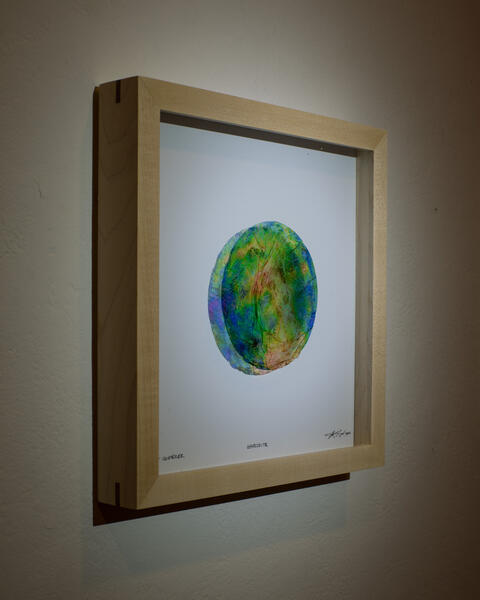 Aphrodite10x10" Pigment transfer to glass, handmade maple shadowbox frame 2014
Aphrodite10x10" Pigment transfer to glass, handmade maple shadowbox frame 2014 -
 Installation View
Installation View -
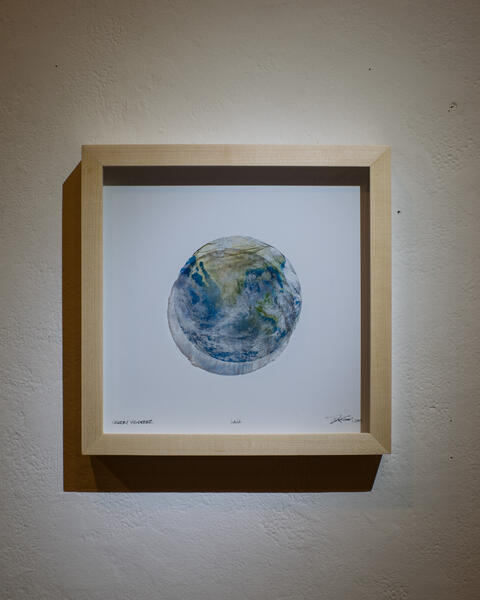 Gaia10x10" Pigment transfer to glass, handmade maple shadowbox frame 2014
Gaia10x10" Pigment transfer to glass, handmade maple shadowbox frame 2014 -
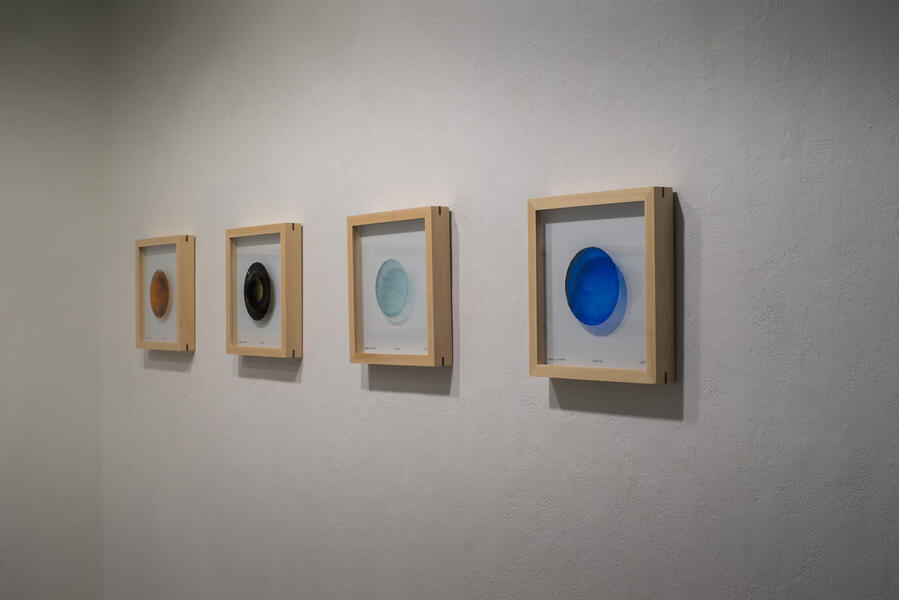 Installation view, partial
Installation view, partial -
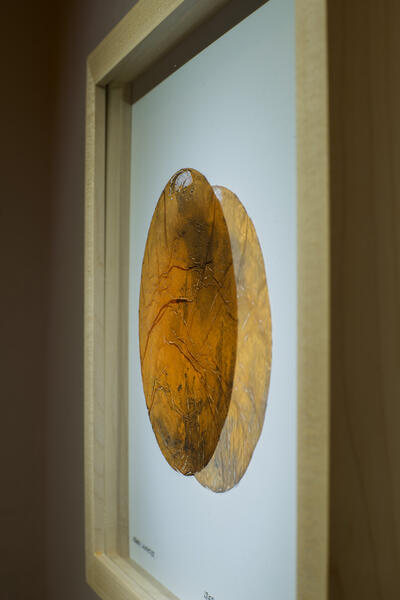 Ares10x10" Pigment transfer to glass, handmade maple shadowbox frame 2014
Ares10x10" Pigment transfer to glass, handmade maple shadowbox frame 2014 -
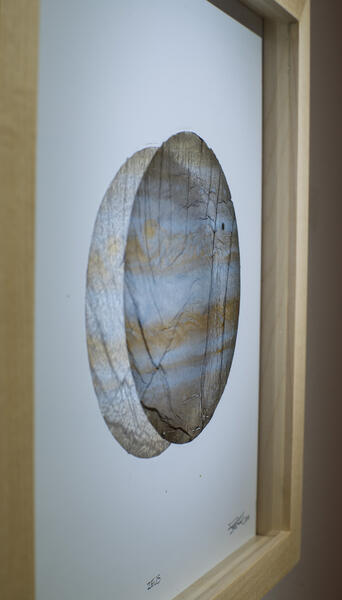 Zeus10x10" Pigment transfer to glass, handmade maple shadowbox frame 2014
Zeus10x10" Pigment transfer to glass, handmade maple shadowbox frame 2014 -
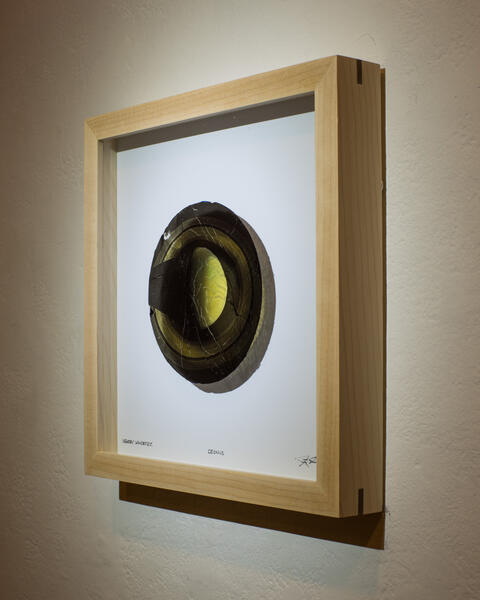 Cronus10x10" Pigment transfer to glass, handmade maple shadowbox frame 2014
Cronus10x10" Pigment transfer to glass, handmade maple shadowbox frame 2014 -
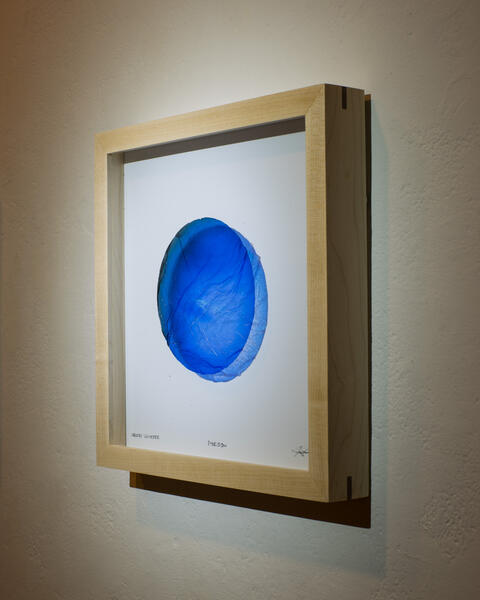 Poseidon10x10" Pigment transfer to glass, handmade maple shadowbox frame 2014
Poseidon10x10" Pigment transfer to glass, handmade maple shadowbox frame 2014 -
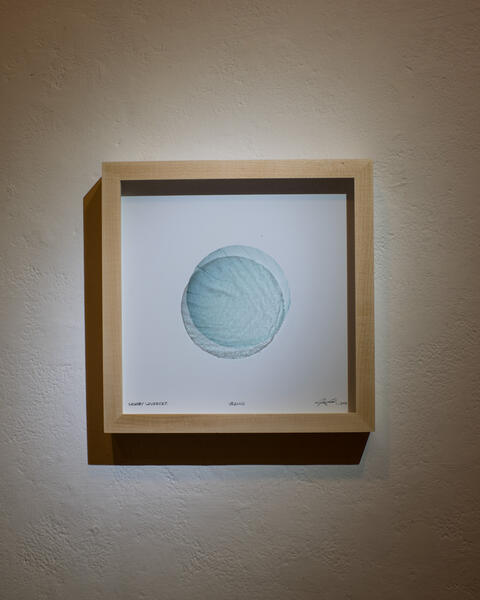 Uranus10x10" Pigment transfer to glass, handmade maple shadowbox frame 2014
Uranus10x10" Pigment transfer to glass, handmade maple shadowbox frame 2014
Cell Stories
I began this work with the simple hypothesis: that many people look to science for a very similar reason that we look to art, not for cold calculation and concise explanation, but for a story, something to amaze us, and a new mystery for our minds to unravel. While working with the Institute for Micromanufacturing at Louisiana Tech University during 2011, I realized that I could not hope to fully understand all of the research that happens there, but that I could witness an always tangible amount of enthusiasm that poured out from the laboratories. If you could get someone going on the right tangent, they would begin to say poetic, powerful, and passionate things that would always surprise me, and I realized that these emotions are what outsiders, like myself, could latch onto and then use to transition into a discussion of what is happening within these labs. The works in this exhibition speak to some of the stories that occur in the nano and micro-scale research occurring at the IfM. The stories range from cancer research to production of Micro-Electro-Mechanical Systems (MEMS) and mix the actual words from the researchers with my own imagination to create images that reflect the sense of mystery, curiosity, and investigation that occur right under our noses, at a nanoscale.
Interrogations at a Nanoscale
"I want to interrogate the nervous system." Dr. Mark DeCoster says to me late one night in his office as we chat about his unique cancer research at the Institute for Micromanufacturing and Biomedical Engineering at Louisiana Tech University, where I was a fellow during 2010-2011. I was taken aback that this kind of dramatic statement was the norm amongst the researchers who are seeking ways of understanding and defeating cancer. Perhaps it was the drama of his words, or the many late nights amidst the hum of machines, but I began to see these researchers as modern Film Noir detectives that are tracking a villain who, like the mood of these movies, is characteristically cruel, ambivalent and strange. These photographs are all made in their labs, using the actual researchers while they perform their methodical tasks, albeit amplified a little bit through harsh light, limited color and dramatic compositions. What these detectives are doing is exciting, perhaps in a different way than a movie character, but the villain they are fighting is every bit as formidable and their imaginative efforts are worth our attention and appreciation.
The Participatory Universe
I grew up under the strong influence of science, surrounded by its practitioners, raised with those always willing to create a hypothesis for one highly inquisitive child. For a time I felt that it was the field I belonged in, but I realized that the lessons I learned studying science never felt truly important until I applied them to art. The process of creating something visually with a concept in mind is a lot like an experiment. The end result is unknown until you are finished, but the sense of understanding, even in failure is clear because it has been earned. Through all of my visual projects, I have embraced methods and themes of experimentation and study. I look for connections that can be made between the natural world and the unseen reality that underpins it, but I am also seeking humanistic connections between those people that study science and those of us who are simply fascinated by it. It is my belief that many of us look to science in a similar way that we seek art, not for cold calculation, but instead for a story, something to challenge us, and a new mystery for our minds to unravel. In my work, I reveal stories based on science that exist beneath the surface of our visible reality and ask viewers to share in my sense of discovery, absurdity, and emotion that I associate with the people and themes of science.
Both fields are built upon the process of creating analogies and models to describe what is occurring in realms that we cannot examine with our natural senses. Tools are used to investigate, document, and understand processes that exist beyond what our eyes can perceive or what our fingers can detect. Whether the tool is a camera, a microscope, a pen or a particle accelerator, these become devices through which an explorer can not only further their own understanding, but also provide evidence to share with others. I embrace many different tools in my quest to explore my own unseen reality, but photography has always been my primary instrument. With its unique and tenuous connection with truth, evidence and culture, photography is the perfect medium to investigate how our reality is guided by unclear, invisible theories of science. Just as quantum mechanics demonstrates how interactions of energy and matter change depending on how we choose to view them, the connotations of truth within a photographic image can be strongly influenced by the choice of camera format or printing. No other medium embraces veracity in this manner, and because of that, photography has great power. However, there is also potential in the combination of photography with other mediums, and I welcome the results of such explorations and often include computer graphics, drawing, installation, sculpture, video and the use of laser-cutters into my process. Each of my projects serves as a means to connect the scientific concepts I admire with the visual metaphors that I crave, through which I enhance my own personal sense of understanding, while facilitating a dialog and shared sense of discovery with my audience and collaborators.
Both fields are built upon the process of creating analogies and models to describe what is occurring in realms that we cannot examine with our natural senses. Tools are used to investigate, document, and understand processes that exist beyond what our eyes can perceive or what our fingers can detect. Whether the tool is a camera, a microscope, a pen or a particle accelerator, these become devices through which an explorer can not only further their own understanding, but also provide evidence to share with others. I embrace many different tools in my quest to explore my own unseen reality, but photography has always been my primary instrument. With its unique and tenuous connection with truth, evidence and culture, photography is the perfect medium to investigate how our reality is guided by unclear, invisible theories of science. Just as quantum mechanics demonstrates how interactions of energy and matter change depending on how we choose to view them, the connotations of truth within a photographic image can be strongly influenced by the choice of camera format or printing. No other medium embraces veracity in this manner, and because of that, photography has great power. However, there is also potential in the combination of photography with other mediums, and I welcome the results of such explorations and often include computer graphics, drawing, installation, sculpture, video and the use of laser-cutters into my process. Each of my projects serves as a means to connect the scientific concepts I admire with the visual metaphors that I crave, through which I enhance my own personal sense of understanding, while facilitating a dialog and shared sense of discovery with my audience and collaborators.
-
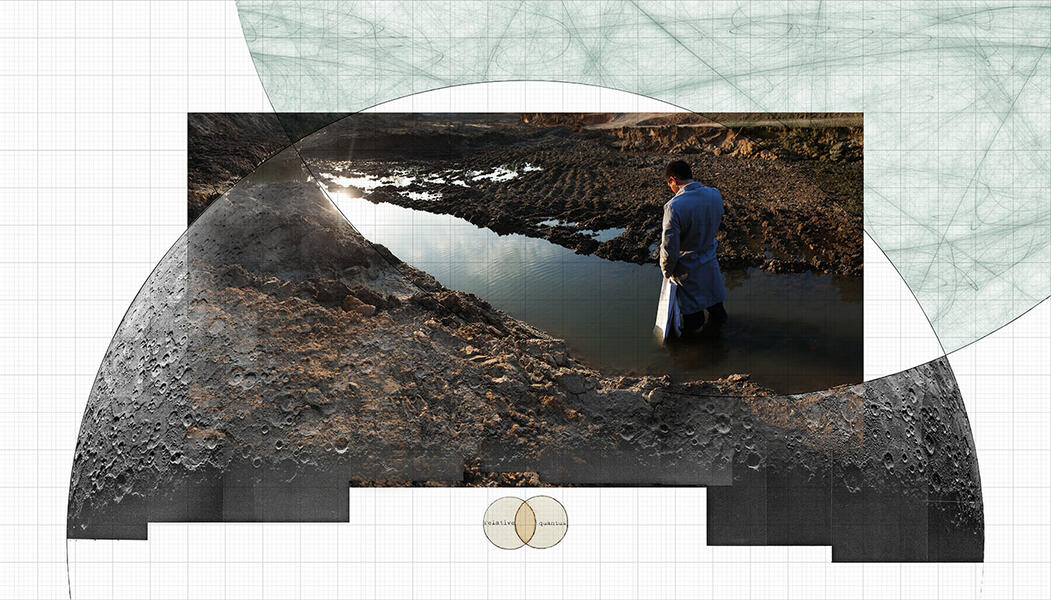 Relative Quantum24x42 inches Archival Pigment Print 2009 That river of matter and mind that flows paradoxically between two uncooperative sides of physics.
Relative Quantum24x42 inches Archival Pigment Print 2009 That river of matter and mind that flows paradoxically between two uncooperative sides of physics. -
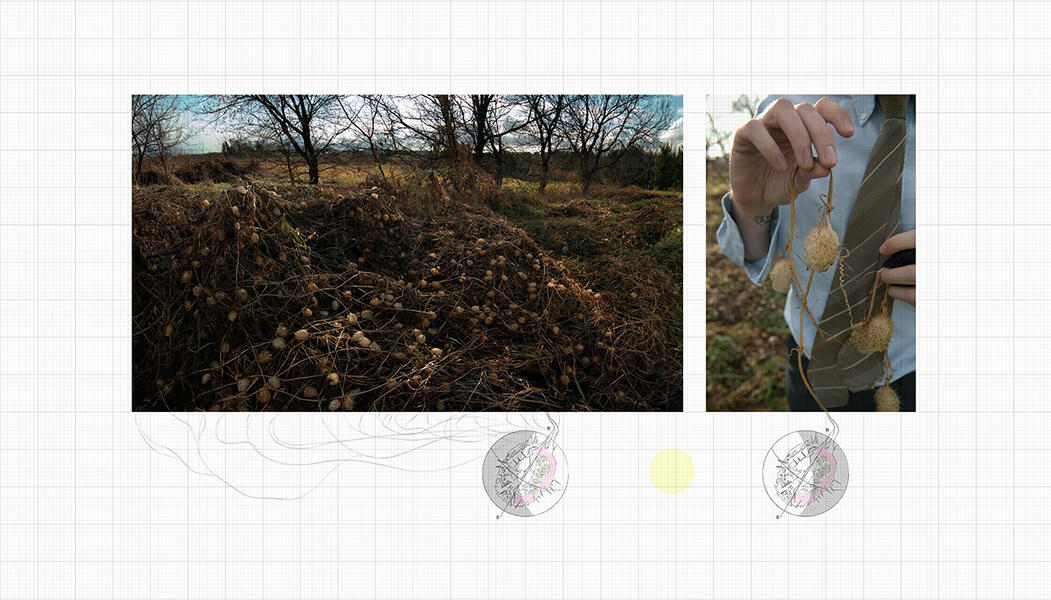 Season Cycle24x42" Archival Pigment Print 2006 Learning and earning the story of these plants through reflection and study.
Season Cycle24x42" Archival Pigment Print 2006 Learning and earning the story of these plants through reflection and study. -
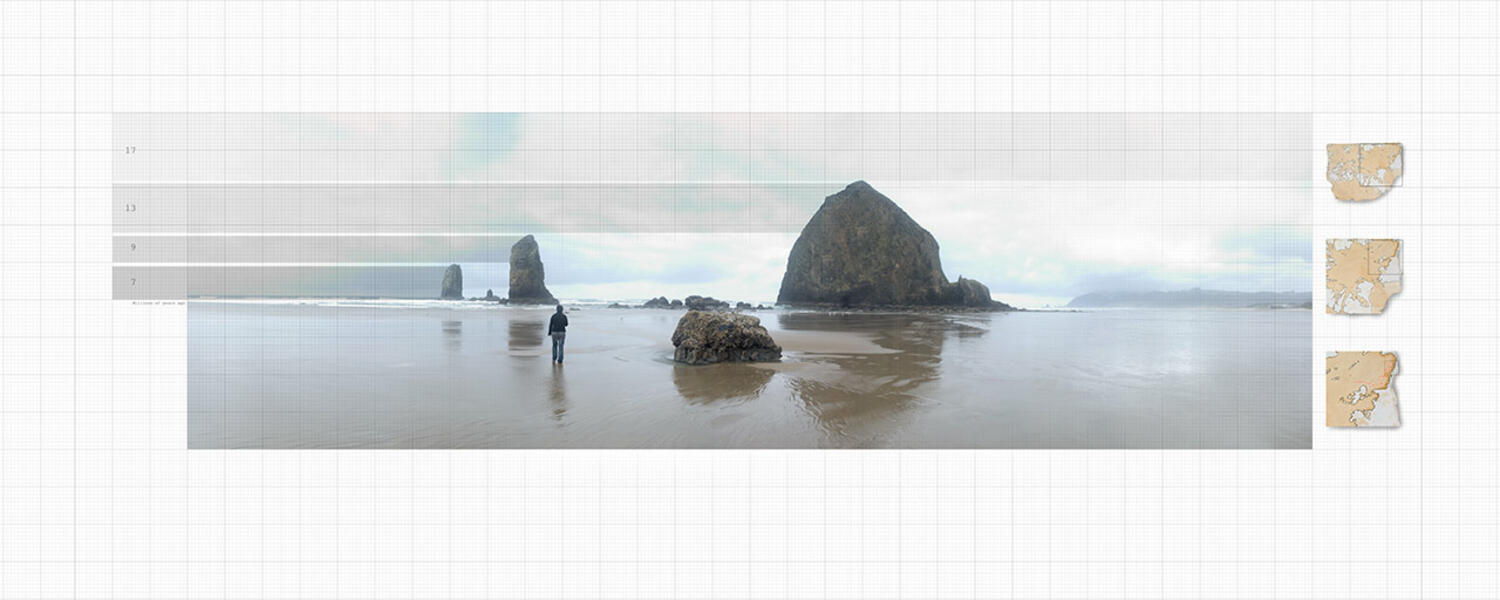 Fissure Erosion24x60 inches Archival Pigment Print 2006 Graphically depicts the history of Haystack Rock, where the sand eroded away over 17 million years to reveal the current landscape.
Fissure Erosion24x60 inches Archival Pigment Print 2006 Graphically depicts the history of Haystack Rock, where the sand eroded away over 17 million years to reveal the current landscape. -
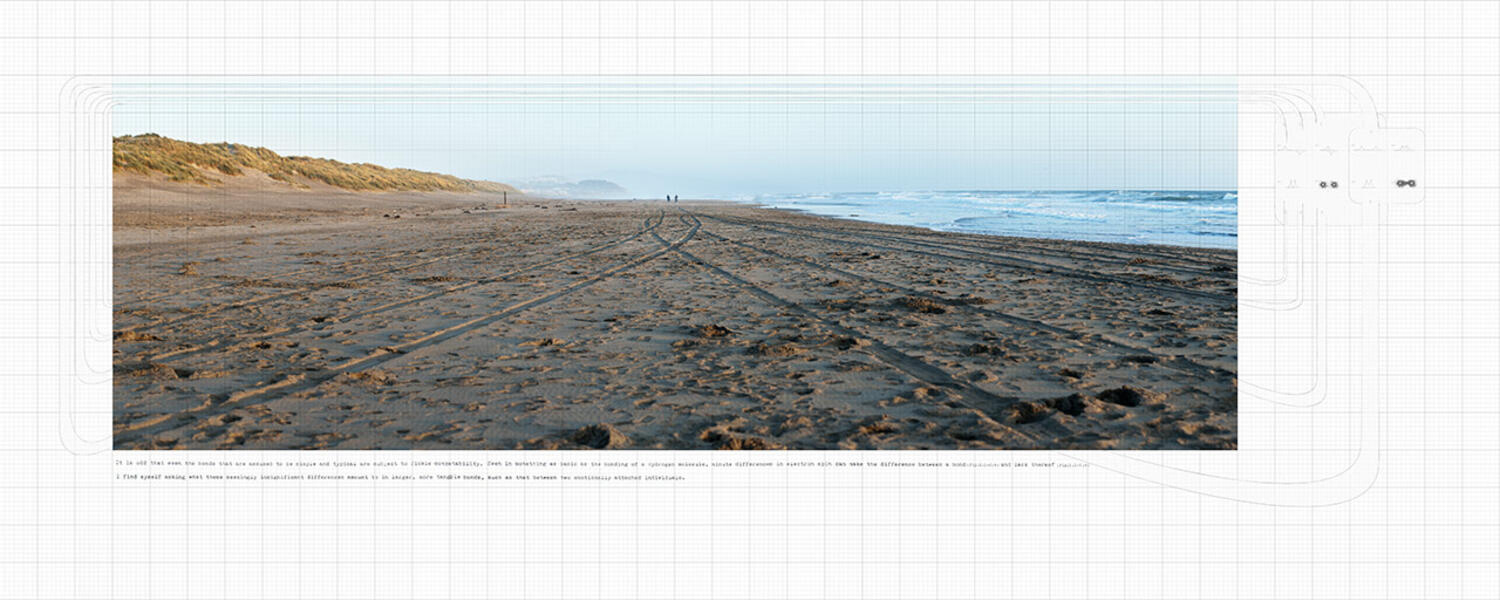 Bonds24x60 inches Archival Pigment Print 2009 Typewriter text from piece: "It is odd that even the bonds that are assumed to be simple and typical are subject to fickle compatibility. Even in something as basic as the bonding of a hydrogen molecule, minute differences in electron spin can make the difference between a bond (fig.2.1-2.4) I find myself asking what these seemingly insignificant differences amount to in larger, more tangible bonds, such as that between two emotionally attached individuals."
Bonds24x60 inches Archival Pigment Print 2009 Typewriter text from piece: "It is odd that even the bonds that are assumed to be simple and typical are subject to fickle compatibility. Even in something as basic as the bonding of a hydrogen molecule, minute differences in electron spin can make the difference between a bond (fig.2.1-2.4) I find myself asking what these seemingly insignificant differences amount to in larger, more tangible bonds, such as that between two emotionally attached individuals." -
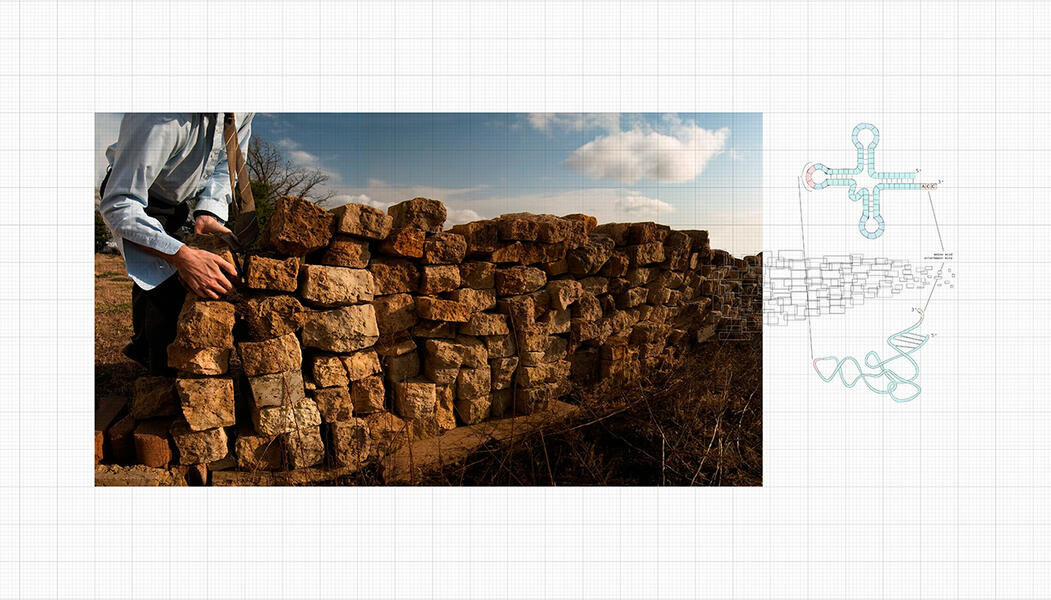 Amino Acids24x42 inches Archival Pigment Print 2006 A playful visualization and reflection on the phrase "Amino Acids, the building blocks of life."
Amino Acids24x42 inches Archival Pigment Print 2006 A playful visualization and reflection on the phrase "Amino Acids, the building blocks of life." -
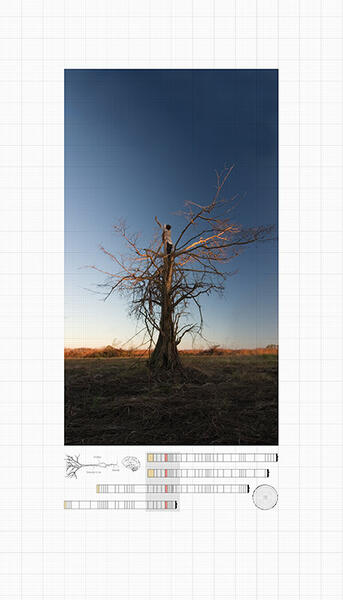 Rings42x24 inches Archival Pigment Print 2006 Ring diagrams can depict drought, fire and other changes that occur to a tree. It is the memory and sight of a forest, and how we sense its history and their stories.
Rings42x24 inches Archival Pigment Print 2006 Ring diagrams can depict drought, fire and other changes that occur to a tree. It is the memory and sight of a forest, and how we sense its history and their stories. -
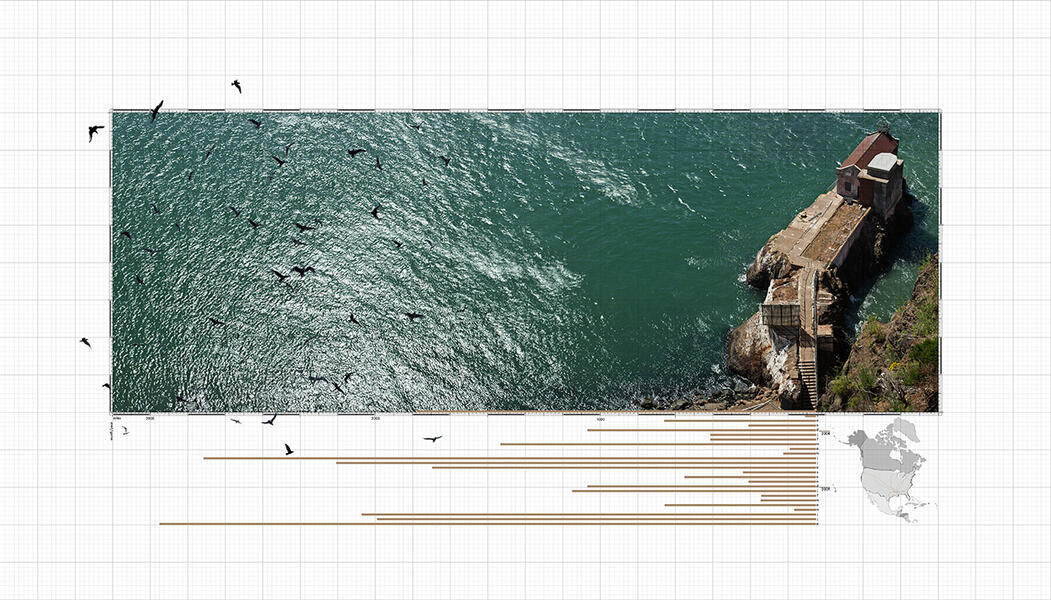 My Distance Away24x42 inches Archival Pigment Print 2009 Chart depicts my distance away from my home during a year and a half long period.
My Distance Away24x42 inches Archival Pigment Print 2009 Chart depicts my distance away from my home during a year and a half long period. -
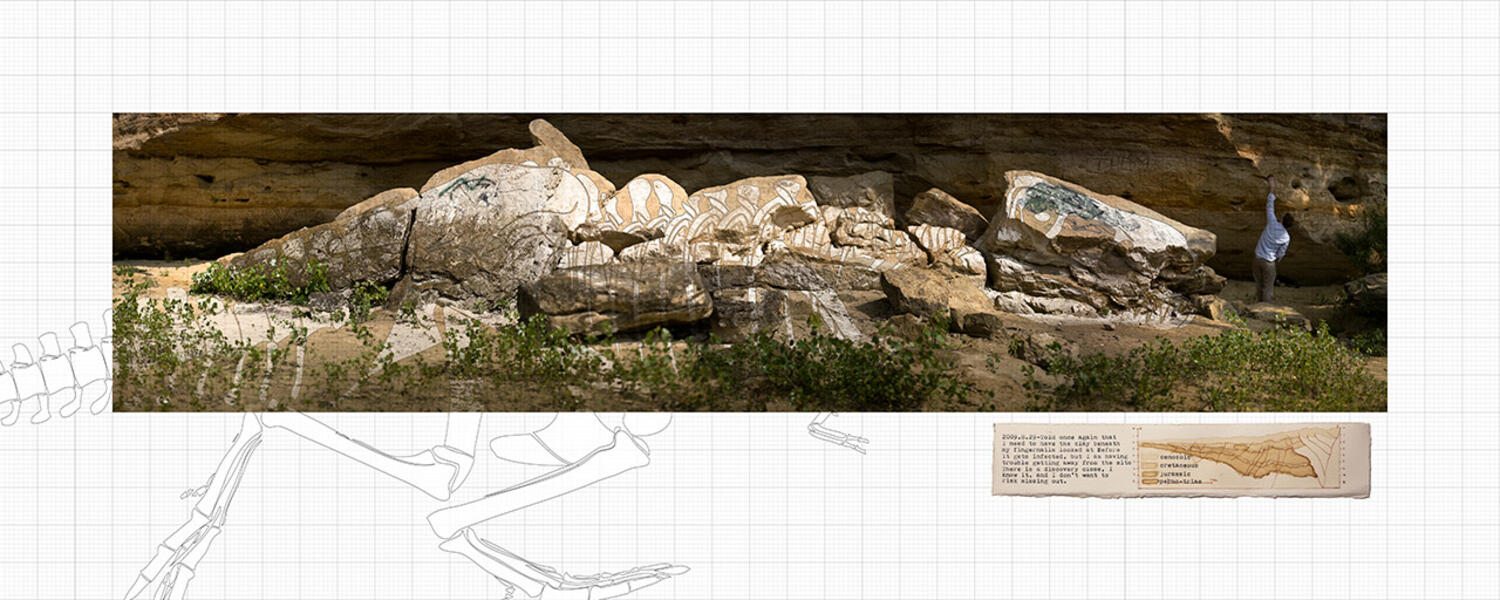 Dinosaurus Studium24x60 inches Archival Pigment Print 2009 I am still illustrating my childhood fantasies.
Dinosaurus Studium24x60 inches Archival Pigment Print 2009 I am still illustrating my childhood fantasies. -
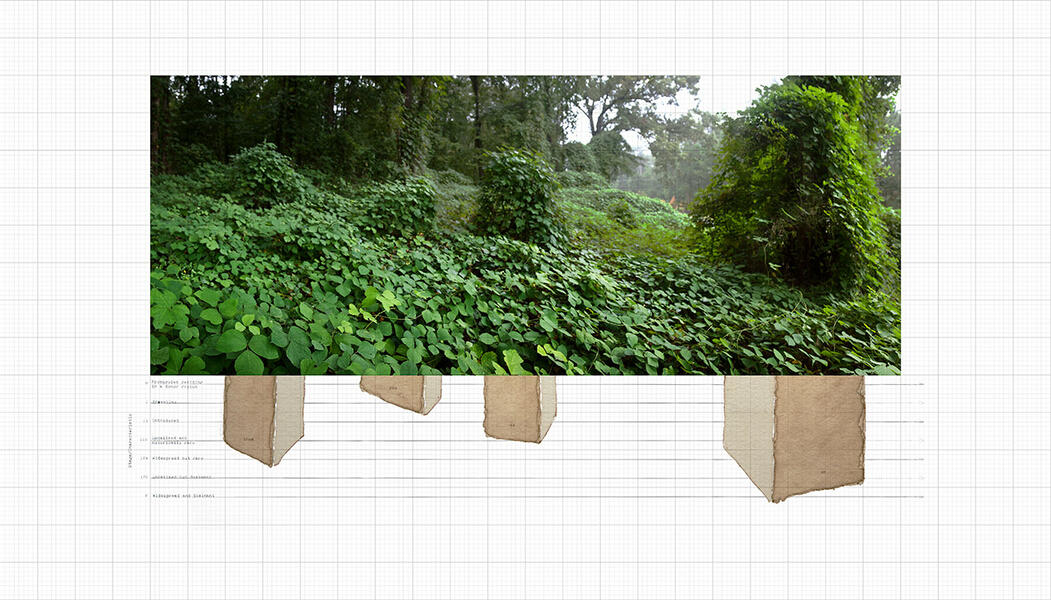 Invasive Species24x42 inches Archival Pigment Print 2009 This image was created after I noticed that the categorization of invasive species could easily be applied to mankind.
Invasive Species24x42 inches Archival Pigment Print 2009 This image was created after I noticed that the categorization of invasive species could easily be applied to mankind. -
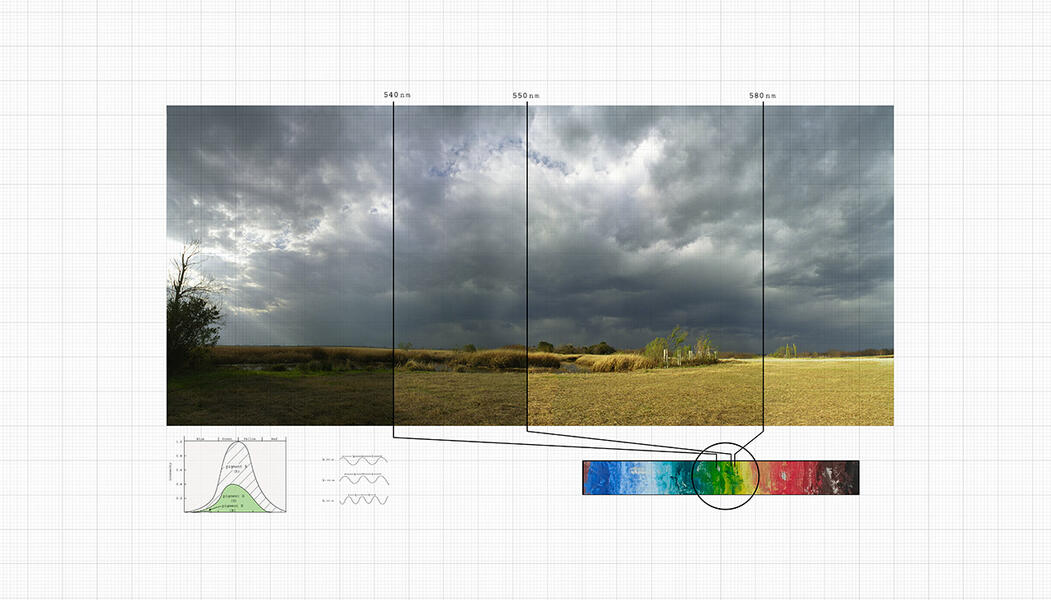 550 Nanometers24x42 inches Archival Pigment Print 2006 Exploration of a green variable, the most sensitive color in our vision.
550 Nanometers24x42 inches Archival Pigment Print 2006 Exploration of a green variable, the most sensitive color in our vision.






























